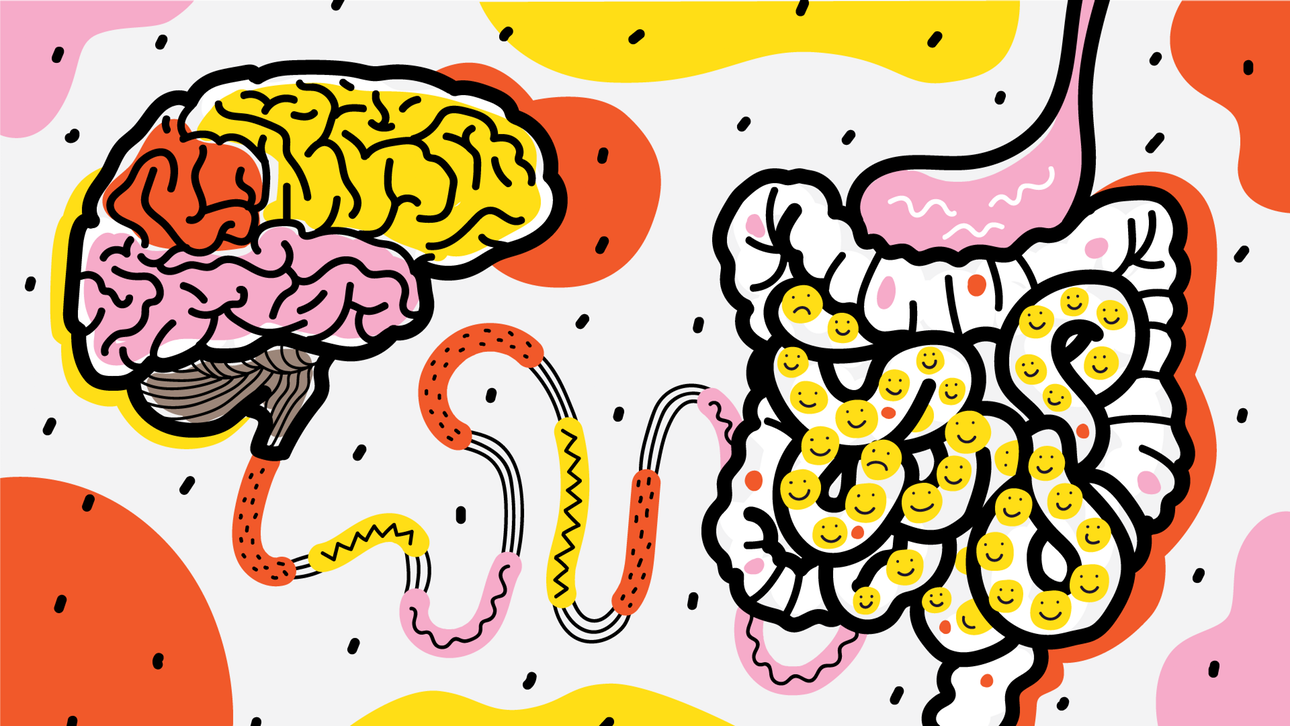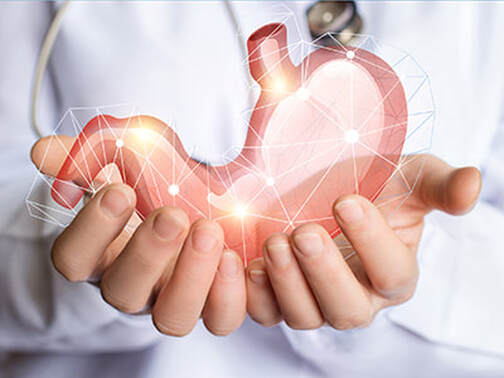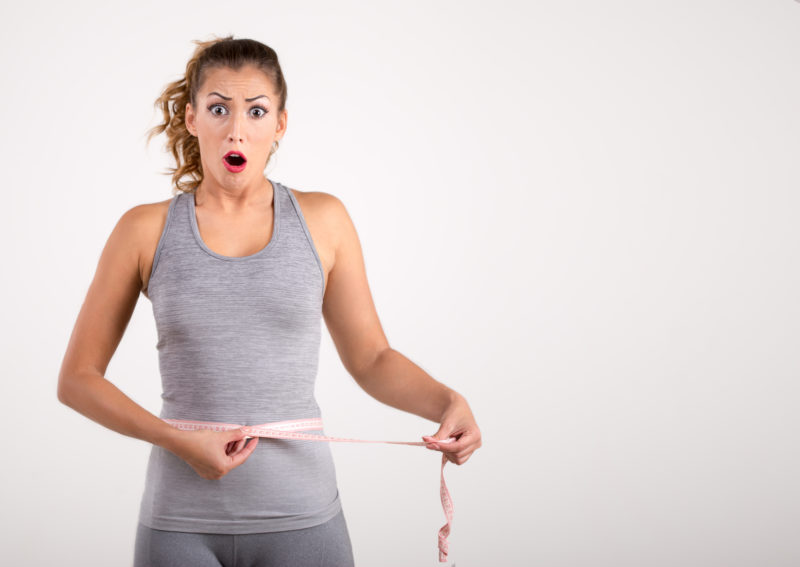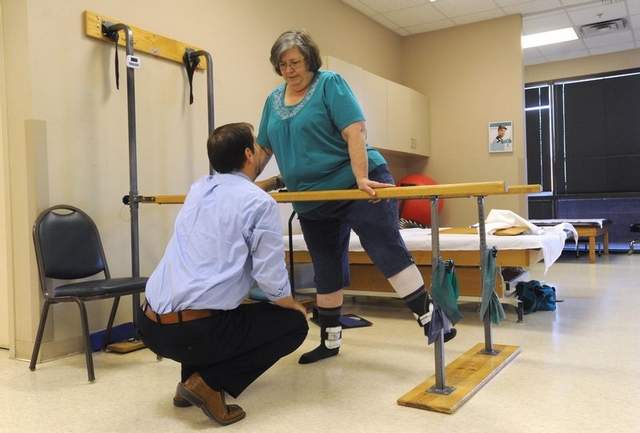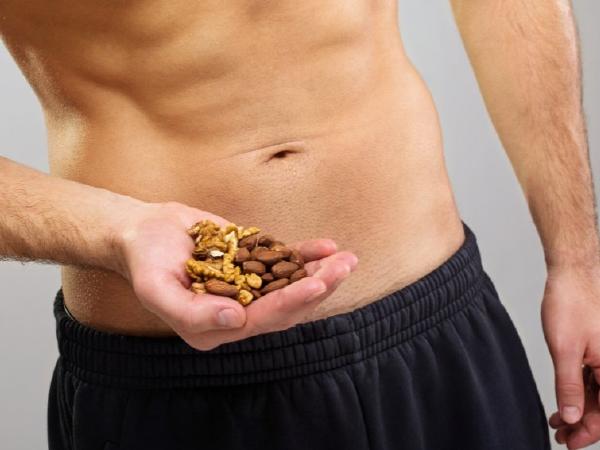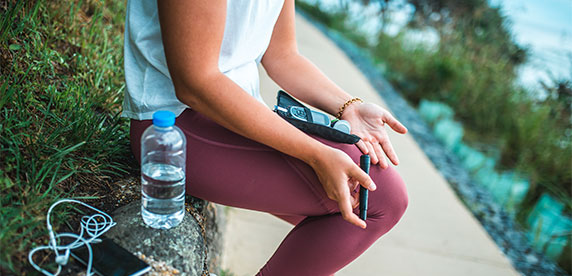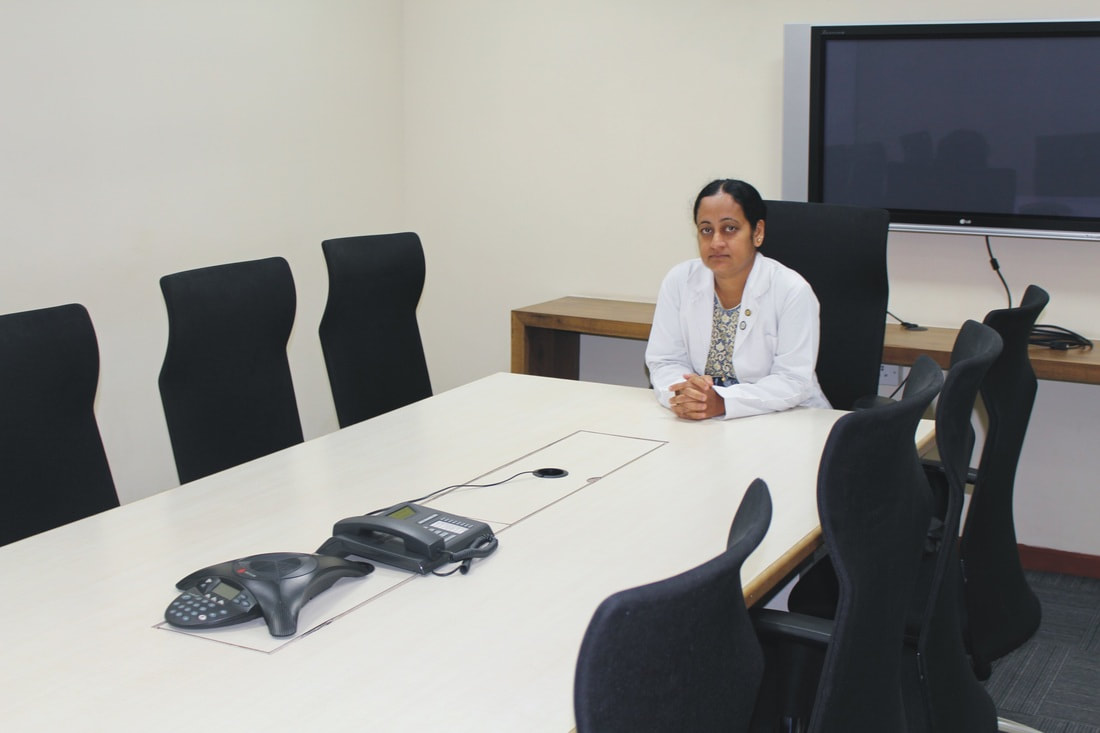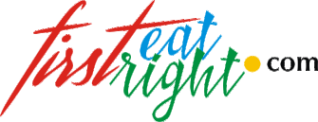|
Health is the ultimate requirement of any human being. Its beyond what money, power or position can buy you! Good health is the result of a healthy lifestyle, nutritious foods and a stress-free living. There is no substitute for health and we cannot replace ourselves with a substitute who can work for our health! ‘Earn your health by learning to stay fit’ is 100% true and in this world, individuals have started realizing its true value with the occurrence of more and more obesity/overweight-related issues that’s taking each of us by storm. Consumers have become extremely health conscious wanting to choose foods and ingredients that are rich in nutrients. They are curious to know how their intake of foods would affect their health and fitness goals and hence, are ideally interested in knowing the nutritional value of the food they consume. With the advent of fitness devises and online activity trackers consumers keep constantly updating themselves on their recent activity levels, heartbeat rhythms and overall fitness ratios. Many are in love with fitness wearables and don’t hesitate to spend thousands of rupees on these wearables that use accelerometers, GPS tracking and other technology to track the activity level.
Some others stick with their traditional approach of maintaining a diary to note down daily intakes. Its good, works wonders on our rote memory and also makes us realize the number of calories that goes into our body each day. This might even make us more aware of what we choose to eat and avoid. But maintaining a diary is time consuming, needs us to exactly remember how much we ate, what we ate and when we eat which is bound for errors, requires our manual input daily, leads to under- or overestimation of what we eat and above all, we are bound to get tired of the daily task of updating our diary thereby abandoning the idea altogether and skip the noting down part. This is especially true in case of consumers who eat out at restaurants who are burdened with the need to track and know the ingredients and the amount of ingredients that go into a meal. Many restaurants these days denote the nutritional information of the different foods offered in the menu card or even their websites show the required information but the individual still is forced to pen down this information manually in his/her diary which is time consuming and takes greater efforts. These consumers would be overjoyed when they have a system that would automatically calculate the caloric intake and nutritional values of their meals including when he/she is eating at a restaurant. The patent here talks about the invention of a health tracking (HT) computing device to retrieve nutritional information for a consumer. It includes receiving transaction data associated with the transaction of the consumer. This transaction data includes transaction amount and a merchant identifier associated with a food merchant. There are all the different combinations possible for the food amount listed and the nutrients linked to each food is also noted. As soon as the consumer swipes his/her card the transaction data involved starts rolling out the process of information extraction. The HT computing device also generates recommendations for healthier food items available at other different merchants based on the stored nutritional information available in the database corresponding to the payment cardholder. As the location of the consumer is also received along with other information in the transaction data, the system generates recommendations based on the available options that exist in the nearby locations from where the consumer is currently present. The price of each item and menu information are queried from a database and this information is used to compare the transaction amount of different food combinations that total the transaction amount. For instance, a food item might contain nutritional information including calories per dollar for the price of the food item. The different nutrient suggestions, possible nutrient combinations, suggestive food options and locations of healthy food are a great help for the consumer who wishes to choose healthy foods for his/her meal. The patent was published on 22/6/2017 and for in-depth information on the patent please check out the following links: United States Patent & Trademark Office: http://patft.uspto.gov/netacgi/nph-Parser?Sect1=PTO2&Sect2=HITOFF&p=3&u=%2Fnetahtml%2FPTO%2Fsearch-bool.html&r=144&f=G&l=50&co1=AND&d=PTXT&s1=health&s2=fitness&OS=health+AND+fitness&RS=health+AND+fitness World Intellectual Property Organization: https://patentscope.wipo.int/search/en/detail.jsf?docId=US199419841&redirectedID=true European patent Office: https://worldwide.espacenet.com/publicationDetails/biblio?DB=EPODOC&II=0&ND=3&adjacent=true&locale=en_EP&FT=D&date=20170622&CC=US&NR=2017178534A1&KC=A1 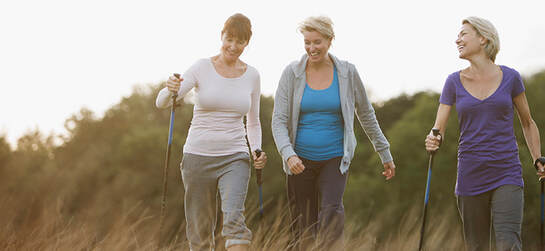 Exercise & Lifestyle Play an Active Role in Alongside Nutrition in Determining Osteoporosis Risk Exercise & Lifestyle Play an Active Role in Alongside Nutrition in Determining Osteoporosis Risk A woman’s health goes for a toss at different stages of her life owing to the staggering hormone imbalances that are prominently seen during her puberty, childbirth, monthly menstruation cycles and post-menopause. Hormones define our moods and energy levels. The efforts required to go through a smooth transition through our younger years with these hormone fluctuations is passable when we compare the changes that occur to our physical and mental well-being post menopause. Speaking of the physical body, osteoporosis affects the health of postmenopausal women making it a great cause of public concern worldwide. Osteoporosis: Porous Bones Our bones become stronger and bone mass increases only until the age of 30 after which it starts deteriorating. The quality of our bones is directly dependent on the quality of the food that goes into strengthening our bones until the age of 30 after which the food we eat helps to only maintain the nurtured strength and bone mass until menopause. After menopause there is a sharp drop in estrogen levels leading to greater bone loss paving way for conditions such as osteoporosis. Bone loss happens at a rate of 2-3% during the first few years and 0.5-1% thereafter. Osteoporosis is a progressive disease characterized by a decrease in bone mass and deterioration of bone structure leading to an increased risk of fragility fractures. The causative factors are many-genetics (almost 60%) takes a blame on one side for bone metabolism while nutrient intake takes the blame on the other end of the spectrum. We are well aware that vitamin D and calcium are integral to a healthy bone structure but other micronutrients and vitamins too are critical for a smooth bone metabolism. Despite genetics playing a more-important role in deciding bone mass variance, by adopting a heathy lifestyle that increases peak bone mass in kids and adults we can reduce the risk of osteoporosis. Dairy products have been lauded with benefits for supporting better bone mineral density (BMD) but there are also controversies surrounding their protection against osteoporosis. A population study showed that consuming 300 mg/day of calcium (one glass of milk) decreased risk of hip fracture in postmenopausal women whereas a Swedish study showed that consuming three or more glasses of milk/day increased the risk. Meta-analysis too showed that decreased milk intake was not associated with increased osteoporosis risk. These studies are from the West where the diet is enriched with abundant cheese and yogurt intake. Comparatively, the consumption of milk and dairy in Asian countries is pretty less and we need studies exploring the effects of dairy consumption on osteoporosis risk in postmenopausal women in these countries. The Korean Study While fermented foods are an integral part of every Korean household along with rice and vegetables, the importance given to dairy products is not up to the mark-only 60% (479 mg) of the recommended dietary allowance of calcium (800 mg/day). Also, the prevalence of osteoporosis among Korean women was more than double that of American women which makes the study regarding the effects of dairy on osteoporosis in countries that consume low milk and dairy products even more critical. The cohort Korean study initially included 10,038 participants aged between 40 and 69 years of which 2,317 completed their food frequency questionnaire at the baseline survey. After elimination and withdrawals only 1,573 participants remained for analysis and a dietary intake assessment was made on these participants where the dairy foods included mostly were milk, yogurt, cheese and ice cream. The frequency of servings was split into 9 categories-never, once a month, 2-3 times a month, 1-2 times a week, 3-4 times a week, 5-6 times a week, once a day, twice a day and three or more times a day. Portion sizes were classified as small, medium and large. Height and weight measurements, age of menopause, lifestyle routines, exercise routines, smoking and drinking behaviors and body mass index calculations were done for each of the participants. In the four-year follow-up period 273 new cases of osteoporosis in the radius and 407 in the tibia were identified. While smoking and physical activity did not differ between the two groups, people in the osteoporosis group were found to have higher BMI, lesser education, lower household income and living in a rural area comparatively. The radius osteoporosis group had decreased intake of milk, yogurt and dairy products in comparison to the normal group. Results showed that:
A 10-year Chinese cohort study showed that when calcium intake was <400 mg/day it proved to be a prominent risk factor for hip osteoporosis in postmenopausal women. Another study found that calcium supplements decreased bone mass loss in women who have been in their post menopause stage for more than 5 years. A cross-sectional study performed on 1,771 early postmenopausal women showed that calcium intake was never a problem for osteoporosis risk when overweight was not considered. Taking overweight into account it was found that women with the lowest calcium consumption was likelier to have osteoporosis compared to women with the highest calcium intake. A small change in dietary practice that promotes calcium intake could be of great help in reducing the risk of osteoporosis in postmenopausal women. In another study, 30 healthy postmenopausal women were either given 500ml of semi-skimmed milk increasing total calcium to 1,200 mg or were given no supplementations. At the end of the 6 weeks of trial those who received supplements had a decrease in several biochemical variables compatible with diminished bone turnover. Many studies also show that lower milk intake during childhood was a critical factor in causing osteoporosis in later adulthood in women. There are several other studies that show that intake of vitamin D and calcium proved to be a rockstar combination in reducing the risk of osteoporosis in postmenopausal women. European Study Even European data show that intake of vitamin D and calcium was below recommended ranges in postmenopausal women and this might be debilitating for bone health. Women aged 50 and above took anywhere between 600 mg/day to 900 mg/day which was below recommended ranges but the surprising fact here is that even younger adults lacked the necessary levels of these nutrients. A survey by the International Osteoporosis Foundation (IOF) showed that 60% women knew that they were at an increased risk of developing osteoporosis at some point in their life and 99% respondents realized the importance of calcium for improved bone health. Comparative Cross-sectional Study A study on 60 women who were over the age of 50 and were postmenopausal for over 5 years was conducted for analyzing the risk of osteoporosis. These women were split into two groups-the control group consisted of 30 women with a T-score at the lumbar spine or hip to the upper 1 and group case consisting of 30 women with osteoporosis with a T-score at the lumbar spine or hip equal to -2.5. Body measurements were taken, a food questionnaire was given asking for food consumption frequencies of different foods in the last 10 years, overall caloric intake and the major nutrients that were normally consumed. A questionnaire consisting of 20 items that matched the majority of foods were grouped into 6 groups-milk and dairy products, meat, poultry, fish and eggs (MPFE), fruits and vegetables, legumes and starchy foods, drinks such as coffee, tea and soft drinks, oil seeds and olive oil. The average calorie intake was similar in both the groups while protein intake was in excess and fiber intake was below recommended levels. The average calcium intake was significantly lower in the osteoporotic group compared to the control group and so was potassium intake. Intake of copper, magnesium, phosphorus and vitamin D was also significantly lower in the osteoporotic group compared to the control group. Milk and dairy products consumption were also significantly lower in the osteoporotic group but meat consumption (MPFE) was higher in women in the osteoporotic group. With respect to fats, while saturated fat intake was higher the consumption of monounsaturated fatty acids was significantly lower in the osteoporotic group. Nutrition is a prominent determinant of osteoporosis and the greatest risk factor for osteoporosis in women above the age of 50 is menopause. It is possible to combat this risk with the right intake of nutrients such as calcium, vitamin D and protein, exercising regularly and abstaining from drinking and smoking. Dairy products provide us with more of these nutrients comparatively. A glass of milk, a 180 g serving of yoghurt and 30 g of cheese gives you with 250 mg of calcium. So, it is possible to achieve daily recommendations with only 3-4 portions of dairy but if you try achieving it with vegetables or whole grains you need 24 servings of green veggies or 48 servings of whole grains to accomplish the same. By eating a well-balanced diverse diet, we can fulfill the nutrient needs of our body and keep it healthy. References High dairy products intake reduces osteoporosis risk in Korean postmenopausal women: https://e-nrp.org/search.php?where=aview&id=10.4162/nrp.2018.12.5.436&code=0161NRP&vmode=FULL Dairy intake & bone health: https://www.sciencedirect.com/science/article/pii/S0022030211005522 Nutrition & bone health in women after menopause: https://journals.sagepub.com/doi/full/10.2217/WHE.14.40https://journals.sagepub.com/doi/full/10.2217/WHE.14.40 Nutritional risk factors for postmenopausal osteoporosis: https://www.sciencedirect.com/science/article/pii/S209050681630015X Most of us are members of the ‘clean plate club’ as that’s the way we’ve been brought up since younger age-finish off whatever has been served onto the plate irrespective of the size of the plate. Mama and papa even bribe us with candies or ice creams to eat our food. Disciplining the kid to complete his/her meal is not the right way to teach him/her portion control. By dictating this way, we are nurturing a generation of children who remain unaware of the portion sizes that would keep their stomach full. When our child says that his/her tummy is full its time to say goodbye to the rest of the food. Only by doing this we allow them to decide upon the right quantity of foods that would satisfy their hunger. If not, the child grows into an adult who eats all that is in his/her plate irrespective of whether he/she is hungry or not. Portions are integral for our weight management. How much we eat is a key player in assessing our total calorie intake beyond what we eat.
The amount of food served determines the amount of food usually consumed. And, the amount of food served depends on the eating ware placed in front of you during mealtime. Despite this, we remain unaware of the fact that a simple eating ware dominates our portion sizes and the rate at which we eat our food. The edge of the container is the maximum space allocated for filling it. Solid foods can even exceed the rim of these containers and we don’t have any measuring system that takes this into account for total calorie calculation. When you go to a nutritionist or dietitian for a diet chart, the RDN gives you a list of foods that can/cannot be eaten along with portion sizes. At the nutritionist’s clinic, she shows the respective portion sizes allowed and the measures that denote these portion sizes. The portions recommended (based on your age, sex, weight, etc.) differs from what you’ve been consuming until now. This is hard to put into practice for anyone of any age as currently there are no recommendations to gradually modify the rate and quantity consumed neither are there any tools to guide the user in this process. Many start to diet thereby drastically cutting out portions and finally end up binge-eating owing to lack of fullness and satiety. A lot many diet devices focus either on the fat, sugar and calorie content of the food or individual serving containers. Individuals are also unaware of the subtle differences in eating ware that can cause a pile up of food portions at the end of the day. For instance, a plate is a plate but the depth of the plate decides the quantity of food that goes into the body. A plate with more depth can contain more food than a flat-surfaced plate. The devices used mostly help in measuring food contained within the device and does not bother about the consumption processes as a system. The individual also assumes portions by making a judgement of the size of the eating ware and the foods served onto it. Weight loss that happens over a period of time is healthy and stays long. Lifestyle changes and eating habits must be changed gradually to maintain permanent weight loss. Apart from changing what goes into our plate we also need to completely focus on how much of it goes into our plate. Rather than abruptly bringing in changes it is required to make a gradual process over time. The rate at which you eat the food also determines how much food you eat. Sitting down at the dining table, its impossible to keep your dieting routine discreet as the devices currently used are sure to make others look not once or twice but a many more times in your direction. The patented eating-ware device invented here relates to an incrementally-sized standard-sized eating-ware system processed for weight management and uses multiple formulas to design and establish certain standard sizes for eating wares which are used as measures to control the amount and rate of food consumed for weight management. This incrementally sized standard-sized eating-ware system enables the user to directly eat from the eating-ware rather than measuring it or transferring it into some other utensil. No devices until now have established standard portion size (SPS) and standard snack size (SSS) and none have addressed the importance of standard size of the utensils and utensil-like eating-ware components using standard bite size (SBS) and standard nibble size (SNS) which determine the rate at which we consume foods. Many snacks come in prepackaged sizes and there would be no need for these measuring devices as the user can directly eat from the packet. But, SNS, SSS, SPS and SBS can be assigned to any prepackaged foods to help the use stick to portion sizes and stick to his/her weight without having to empty the packet into another container. The SNS and SBS are of great help here as we have not got any device helping us measure the quantity of food that goes into the mouth nor we have any idea to calculate calories based on this quantity. The eating-ware component’s geometry can be circular, oval, polygonal or likewise and it can be anything like a bowl, plate, drink-ware or any item that can be used to transfer food directly to user’s mouth or any item that can be used to serve and eat food directly and it can be oval, square, polygonal, cubic or cylindrical. The patent was published on April 28th, 2016 and occupies pivotal importance due to its advantage in our day to day life and weight loss efforts. If you would like to know more about the patented device you can always visit any of the referenced sites here for further understanding. References United States Patents & Trademark Office: http://patft.uspto.gov/netacgi/nph-Parser?Sect1=PTO2&Sect2=HITOFF&p=1&u=%2Fnetahtml%2FPTO%2Fsearch-bool.html&r=1&f=G&l=50&co1=AND&d=PTXT&s1=%22%09HIGHET+DANUTA%22&OS=%22 European Patent Organization: https://worldwide.espacenet.com/publicationDetails/biblio?II=0&ND=3&adjacent=true&locale=en_EP&FT=D&date=20160428&CC=US&NR=2016117950A1&KC=A1 World Intellectual Property Organization: https://patentscope.wipo.int/search/en/detail.jsf?docId=US162049442&recNum=1&office=&queryString=%09HIGHET+DANUTA&prevFilter=&sortOption=Pub+Date+Desc&maxRec=8 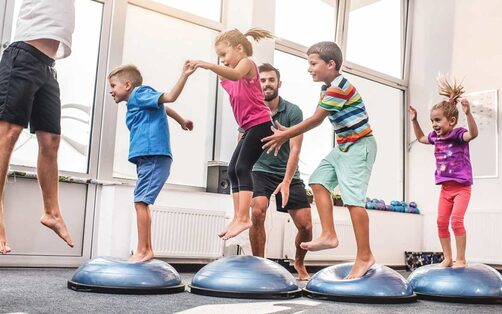 Exercising Together Helps the Kids Benefit from Each Other Exercising Together Helps the Kids Benefit from Each Other Chubby cheeks and dimple chin are loved in babies and in course of time when the chubby baby grows up, what do we expect of from him/her-to become fit from within? That’s not fair! Fitness, exercise and healthy lifestyle are not habits that are introduced at a specific age in life but must be incorporated into the lives of children right from an early age and there is no base age limit for this! Some think that it’s a curse for the present generation to grow in a restricted lifestyle right from a tender age but alas this is the generation that feasts on juicy burgers and delicious pizzas too thereby jeopardizing their health and making childhood and adolescent obesity a major epidemic. In 1997, the World Health organization declared obesity as a global epidemic and almost more than 10% of the children aged between 5 and 18 years are obese/overweight globally. There has almost been a 50% increase in obesity rates in boys and girls between 1980 and 2013. Fitting into modern clothing and dressing up might be a concern due to weight issues among adolescents but there’s more trouble for the mind and body from a health perspective. Type 2 diabetes mellitus, insulin resistance, hypertension, sleep apnea, poor self-esteem, isolation and a lower overall quality of life (health-wise) are common in obese/overweight children. Statistics are clear and the measures that need to be implemented are also crisp but the major point here is how do we implement the measures and what do we do to overcome the epidemic. Think, Let the Ideologies Sink Almost 80% of obese adolescents continue to grow into obese individuals in their adulthood. Adolescence is a period of rapid growth where numerous hormonal changes occur in every individual’s body. This is also the period for the development of obesity and curbing this hazard by bringing in appropriate interventions lays a concrete platform for a lifetime of healthy lifestyle practices that favors the individual for a lifetime of good health. Physical activity is said to be a feasible intervention as children play outdoors (assumingly!) and bringing in changes to their game plan to increase exercise duration is way better than restricting their food portions, limiting a huge list of foods and preventing them from eating out. Healthy eating practices are essential but they alone are not sufficient for radical changes in health. Fitness tests shock us with the result that children today weigh more and have more body fat compared to their counterparts 30 years ago. Motivating your child to start exercising has the potential to decrease the risk of cardiovascular disease (CVD) and also improve heart health. While it is generally assumed that kids are active naturally and don’t need an external push/factor to keep them active many children today are used to a sedentary lifestyle due to the society- smartphones and television shows lure these kids away from playing in the ground to being locked up inside a room all day. Outside factors such as living in a nuclear family where both parents work and the child is left in a daycare, absence of someone to help the child play out, living in an apartment and unsafe neighborhoods support sedentary lifestyle, promote obesity rates and also are risk factors for asthma, diabetes and hypertension. Worldwide Studies on After-school Exercise Effects on Adolescent Children In USA, 1 in 5 children aged around 15 years has a 1 in 5 chance of having clinical symptoms of coronary heart disease. China too has witnessed a steady rise in obesity rates in the past couple of decades. A Chinese research studied the effects of after-school physical activity with/without diet restrictions on obesity, fitness rates and metabolic profiles in obese/overweight Chinese adolescents. 93 overweight adolescents aged around 13-15 years and whose BMI was between 22-35 were considered for the study. Each of these participants were randomly assigned into one of the four groups-diet, exercise, diet & exercise and overweight control. Diets were planned as per the individual’s body weight and age, one hour of exercise session happened four times a week after school hours and this schedule continued for 10 weeks. All the groups except for the overweight control group witnessed a significant decrease in BMI rates, body fat percentage and waist circumference. So, performing exercise at least thrice a week had a positive impact on central adiposity and overall weight ranges on these Chinese adolescents. Indian Study on Adolescent Obese Boys Until now there are not many intervention studies in India for managing obesity problems and most of them come from the West and these studies are based on school-based approaches as more than 90% of the adolescent children attend school making it one of the finest way to attain your goals. A study in India on adolescent boys (studying in class 5-10) aged between 9 and 15 years was conducted. Measurements such as height, weight, body fat, waist circumference, skin fold measures and blood pressure were noted down. The after-school exercise session happened five days a week for 10 months and every session was for a period of 60 minutes. The session was clearly planned in this manner: session commences with warm-up and stretching activities, then comes cardio and strength training and finally, a period of cooling down activities. Sometimes, sports were also a part of the exercise sessions as it helped the individual perform moderate-intensity activity during the period. After the study period (148 sessions) the study measures were calculated and the data compared. Recommendations are for 30 minutes of moderate-intensity exercise at least thrice a week (accounts for 450 min of activity every month) and the participants were divided into three groups based on exercise interventions. This study enforces a 50 min session and when the participant attends 9 sessions (90 sessions in 10 months) the stipulated 450 min of activity time is reached. Any person who attended less than 90 sessions was categorized into low participation group, those who attended 120 of the 148 sessions were categorized into high participation group and those attended between 91 and 119 sessions belonged to the moderate participation group. Of the 205 participants involved in the study, 24% had low participation, 33% had moderate participation and 43% had high participation. Results showed that:
Making PE compulsory in schools is a great initiate but that’s alone not sufficient to curb the obesity epidemic. A 2-year study showed that children who had increased physical education and modified PE classes experienced greater physical activity during school hours but these kids showed poor after-school activity routines and there was also no improvement in fitness or body fat percentage in them. Many other researches also show that involving in 30-60 minutes of physical activity outside school hours leads to overall improvement in physical activity levels, especially in kids. While younger children are motivated to involve in free play, sports such as swimming or football and engage in walking for a moderate distance that’s tolerable, children nearing puberty (12-12 years) can be allowed to take up a sport or even do weight training under adult supervision for a limited period. Adolescents can involve themselves in sports, doing household chores, yoga, running, dancing or even active transportation (such as walking and cycling). References A Randomized Control Trial of Chinese Adolescents: https://www.ncbi.nlm.nih.gov/pubmed/21362327 Effects of After-school Physical Activity Intervention to Reduce Obesity Among Indian Adolescent Boys: http://www.foodandnutritionjournal.org/volume1number1/effects-of-after-school-physical-activity-intervention-to-reduce-obesity-among-indian-adolescent-boys/ Prevention of Childhood Obesity through Increased Physical Activity: https://pediatrics.aappublications.org/content/pediatrics/117/5/1834.full.pdf 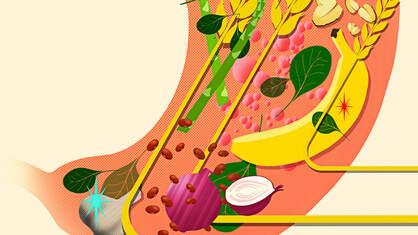 Environment Affects Gut Microbiome Composition to a Great Extent Environment Affects Gut Microbiome Composition to a Great Extent There is more to human body than cells. We all walk around with trillions of microorganisms (labeled as microbes or microbiota) that include not only bacteria but also fungi, viruses and parasites residing all over our body. These organisms are happy with their residence and a whole bunch of them exist in our large and small intestine. The microbiota inside each person is uniquely determined by one’s DNA. Each of us attract different microbes during delivery (in the birth canal) and also through our breastfeeding. Our mums play an integral role in primarily deciding the type of microbes we get exposed to after birth. But as we grow, environmental factors and diet strongly impact the type of microbes in our body thereby increasing our risk for diseases or protecting us against the same ones trying to keep us healthy. There are even articles in reputed newspapers such as the ‘Time’ (https://time.com/5597688/microbiome-diabetes-premature-birth-prediction/) that support the effect of these factors on our microbiome composition. Microorganisms are Indispensable for a Healthy Life We take utmost precaution while using a lavatory or clean our hands thoroughly to get rid of the microbes that exist in the air but its time to understand that a germ-free life is not what we desire. We have increased our risk of autoimmune diseases by minimizing our exposure to gut bacteria right from childbirth. That’s probably due to the increase in the number of C-sections. A child is first exposed to these microbes through the birth canal but in the case of a C-section its only the hospital environment and the microorganisms dancing around. Breastfeeding also doesn’t see the daylight many times and maybe we are setting an environment that’s favorable to diseases such as asthma and type 1 diabetes. With great knowledge comes great enlightenment. Bombarded by the advantages of the gut microbiota individuals who hated these bacteria, fungi and virus have started loving the same ones for their positive effect on our body. We have reached a stage where even waste is not a waste anymore-microbe strains in fecal matter excreted by a human being with a healthy gut is transplanted into that of an individual with colitis. We do have articles and news about effective weight loss changes linked with altered gut microbiome. Each of our body works differently and each of us lose/gain weight in a different manner mostly dependent on our metabolic rates. Some of us have low metabolic rates which makes weight loss process extremely slow whereas, some others have a high metabolic rate which saves them from weight gain despite their frequent indulgence in ice creams and sweet treats. We have got ample theories that altering the person’s metabolic rate by altering the gut microbiota is an effective strategy for weight management. Various researches have shown an indispensable link between microbes and their effect on obesity and diabetes. Testing Diabetes & Obesity A research team followed a group of more than 100 volunteers for 4 years and noted the effects of environmental exposure on their immune system and gut microbe composition. The microbiome can help in detecting insulin resistance and this study showed that people with this condition had a different microbiome composition. Insulin resistance can pave way for prediabetes which in turn can cause diabetes. Hence, the microbiome in the gut surely can help in detecting our risk of diabetes. Similarly, different trials have showed positive links between microbiome composition and risk of premature delivery as well as inflammatory bowel disease. Genetically humans are almost similar but their microbiome composition varies vastly as it is greatly influenced by the individual’s sleep, environment and exercise routines. We do insist upon these for a healthier upbringing but the chicken and egg story does exist here too. Many times, we are perplexed whether sleep routines affect our microbiome or whether the microbiome in our gut determines our quality of sleep. Antibiotics seem to define our quality of life to a great extent. The persistent and overuse of antibiotics has led to antibiotic resistance where the viruses and bacteria are becoming stronger against the medications making us vulnerable to different diseases. Containing diseases and ailments by dispensing antibiotics right from younger years prevents our body from working strongly against these diseases naturally and the immune system is disturbed greatly. Such lack of exposure to germs thereby puts the individual at a lifelong risk of allergies and autoimmune diseases. We do have hints that microbiomes could dictate our future as microbiome-derived meds could be the go-to meds for individuals. These in fact communicate with our brains and bring about mood changes too. This doesn’t come as a surprise as the microbiome does cause intestinal disorders which are related to anxiety and depression levels. Psychobiotics is the new term for describing the impact of gut microbiome on brain health. Any changes in the microbiome that sets it off balance can affect your mood, bring in anxiety and cause stress. The plethora of research focusing on gut-brain connection shows a strong link between these body parts. Basically, psychobiotics are mind-altering probiotics that help in enhancing gut-brain connection and keeping our mood in place. So, what you eat and how you live does have an impact on how you behave and what you think too. References From ancient civilization to modern tribes, what do our microbiomes say about us? https://edition.cnn.com/2017/08/02/health/global-microbiome-project-yanomami-tribe-vital-signs/index.html Role of gut bacteria in averting Type 1 diabetes: https://news.harvard.edu/gazette/story/2017/08/specific-gene-and-intestinal-bacteria-work-together-to-ward-off-diabetes/ Can the Bacteria in your Gut Explain your Mood? https://www.nytimes.com/2015/06/28/magazine/can-the-bacteria-in-your-gut-explain-your-mood.html The Human Microbiome: Why our Microbes Could be Key to Our Health? https://www.theguardian.com/news/2018/mar/26/the-human-microbiome-why-our-microbes-could-be-key-to-our-health According to the World Health Organization, health is “a state of complete physical, mental and social well-being and not merely the absence of disease or infirmity”. Wellness goes beyond health and takes into account different details of the person such as the manner in which they live and how lifestyle impacts their well-being. Wellness is an umbrella term for social, emotional, physical, spiritual, intellectual and occupational well-being. Being free of diseases or being in a happy state of mind doesn’t take off the burden of wellness forever as this is a dynamic process that keeps changing depending on the way we live, what we eat, how much we exercise, duration of our sleep and more. Our present lifestyle gives little space for wellness in our life and there are many of us who don’t realize where we measure up in a scale of 1 to 10 when it comes to wellness. Luckily, we have technology backing us in this aspect of life where a small device helps in tracking our sleep quality, calorie intake, physical activity measures and much more.
Using electronic devices to monitor our nutrition, health, wellness and fitness levels is becoming common but we cannot comment on their quality or precision as most of them are still in their initial stages. These devices do count the number of stairs climbed, steps taken, heart rate, oxygen levels in the blood, respiration levels, body temperature, calories burned and so on but we are not in a stage where all the information acquired are complete, correct and exact. The patent here is extremely useful for day-to-day life wherein we are provided with a fitness, health, wellness and nutrition monitor that captures, monitors and tracks numerous wellness and health factors that include food intake, vitamin and mineral content, composition of consumable products, physical activity, heart rate, blood pressure, electrocardiogram (EKG), body fluids acidity, glucose levels and stress. The monitor designed helps in tracking the nutritional content in every meal or snack consumed daily, energy consumed and energy dissipated and total energy count thereby suggesting any changes to the nutrition, exercise or lifestyle routines that can improve fitness, wellness, health and nutrition levels. The foods consumed are put through image analysis and quantitative volume determination, two of the three techniques (molecular optical fingerprinting is the other one) that help in monitoring nutrition, fitness, wellness and health levels. Apart from total calorie value of the food, information regarding complete nutritional content, vitamin and mineral content and total energy may be derived with image-based analysis or molecular optical fingerprinting. The images captured may be 2D or 3D and they are matched to reference images in a database in terms of shape, color, size and texture. The monitoring device comes up with practical suggestions to balance calories, fulfill nutritional requirements and surpass activity recommendations. The monitoring device tracks the food, liquid and supplements intake noting calorie content and matches it with the required number of vitamins, minerals and other nutrients required for healthy body functioning finally coming up with helpful tips and tricks to achieve optimal wellness. Energy spent is the sum total of the calories burnt on performing various activities such as walking, running, exercise and also includes that of sleeping, sitting and talking. Energy spent is accurately measured using an accelerator, gyroscope, pressure sensors detecting elevation differences, GPS, etc. Other important factors such as age, height, weight and sex may be included as part of the health and wellness assessment index calculation. The device provides data, feedbacks and recommendations to the user which would enable the user to understand positive or negative deviations from projected values and help him/her adjust these accordingly. This invention comes at a stage where our lifestyle practices are far away from that recommended and health status is highly discouraging. Obesity and diabetes are growing on to be global epidemics, heart attacks are affecting adolescent and younger adults and depression is taking a toll on our younger generation. Wellness is lost amidst this chaos and we stand stranded. Maybe, a device such as the one designed here is the go-to one for all of us to bring back the sunshine in our lives. The patent was published on April 2, 2019 and for those of you interested in knowing the intricate details of the device discussed here, you can read about it from any of the links given below, all of which are authentic patent sites: United States Patent & Trademark Office: http://patft.uspto.gov/netacgi/nph-Parser?Sect1=PTO2&Sect2=HITOFF&p=3&u=%2Fnetahtml%2FPTO%2Fsearch-bool.html&r=102&f=G&l=50&co1=AND&d=PTXT&s1=%22human+body%22&s2=fitness&OS=%22human+body%22+AND+fitness&RS=%22human+body%22+AND+fitness World Intellectual Property Organization: https://patentscope.wipo.int/search/en/detail.jsf?docId=US239904133&tab=NATIONALBIBLIO&office=&prevFilter=&sortOption=Pub+Date+Desc&queryString=FP%3A%28personal+wellness+monitoring+system%29&recNum=1&maxRec=16 European Patent Office: https://worldwide.espacenet.com/publicationDetails/biblio?II=0&ND=3&adjacent=true&locale=en_EP&FT=D&date=20190402&CC=US&NR=10249214B1&KC=B1 Life is a balancing act that takes us through difficulties, solves problems and keeps us afloat. Failing to manage these balancing acts can jeopardize our lives and put us in a turmoil. Likewise, a healthy body weight is also a balance between calories consumed and calories expelled. But to lose weight we need to create calorie deficits-burn more calories than we consume. This is vastly achieved through regular physical activity and diet interventions.
Enhancing satiety and preventing absorption are two major ways to block intake of excess foods and control appetite. The physical, chemical and sensory characteristics of the food that we eat determine our satiety state. These signals also strongly impact our time gap between two meals, portion sizes and the time taken to eat a meal. So, it is possible to use these signals to improvise appetite response to the food that we eat and hence, reduce caloric intake. Portion sizes play a major role in helping us reduce total calorie consumption and lose weight eventually. In extremely obese patients such regular practices often don’t yield glorious results. They are subjected to surgeries which also don’t prove to be successful many times. But, in the case of overweight individuals there is the possibility to alter diet practices and bring in effective changes in overall weight. There is a plethora of weight loss pills, supplements and more marketed to people favoring weight loss without side effects. But these don’t bring in optimal results nor are they healthy. The invention discussed in the patent ‘Composition for Reducing Food Intake’ is all about a herbal extract formulation that delays gastric emptying, reduces the time to perceived gastric fullness and was successful in bringing about weight loss in overweight patients over 45 days. The research is even better in the sense that a combination of this herbal extract and dietary fiber induced decreased food intake compared to the use of either alone. The invention patented is an excellent one as obesity exists as a worldwide epidemic leading to several health consequences and debilitating side effects. The key element here is that the extract is not a meal replacement but only an appetite suppressant. A great appetite is a troublemaker as it ensures a definite increase in consumption rate but an appetite suppressant helps to decrease the desire for increased food intake. The composition of the invention is provided as a component of a normal meal in the form of a dietary supplement, health drink, snack, nutrient-fortified beverage, pill, tablet or soft gel. This extract is also nutritionally complete containing vitamins, minerals, nitrogen, carbohydrates and fatty acids acting as the single source of nutrition fulfilling daily nutrient requirements. The composition can be consumed in the form of a biscuit, cereal, muesli, candy, confectionary, cookie or an energy bar. While the extract is suitable for anyone the frequency and quantity recommended depends on the individual’s degree of excess weight. The researchers recommend using this invention on subjects who are obliged to lose weight (as in the case of obese/overweight people) or those who control food intake or skip meals to avoid weight gain. In other words, the extract is generally only given to those people who have a BMI equal to or greater than 30. The patent was originally published on Jan 6th 2011 and is available in many of the world-renowned authentic government patent databases which you can access anytime for a complete understanding of the invention. The links are given here for your convenience. United States Patent & Trademark Office: http://patft.uspto.gov/netacgi/nph-Parser?Sect1=PTO2&Sect2=HITOFF&p=1&u=%2Fnetahtml%2FPTO%2Fsearch-bool.html&r=29&f=G&l=50&co1=AND&d=PTXT&s1=nutrition&s2=humans&OS=nutrition+AND+humans&RS=nutrition+AND+humans European Patent Organization: https://worldwide.espacenet.com/publicationDetails/originalDocument?FT=D&date=20110106&DB=&locale=en_EP&CC=CA&NR=2766095A1&KC=A1&ND=7 World Intellectual Property Organization: https://patentscope.wipo.int/search/en/detail.jsf?docId=US210407582&tab=NATIONALBIBLIO&office=&prevFilter=&sortOption=Pub+Date+Desc&queryString=FP%3A%28composition+for+reducing+food+intake%29&recNum=13&maxRec=130 Changes in Gastric Cancer Risk with Increased/Decreased Consumption of Fruits & Vegetables6/18/2019
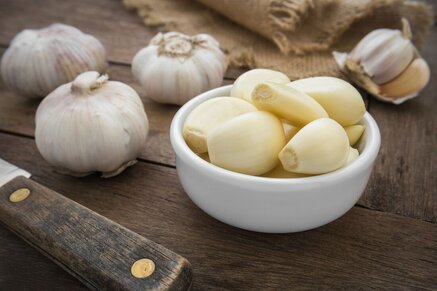 Garlic & Onions are Believed to be Great Saviors Against Cancer Garlic & Onions are Believed to be Great Saviors Against Cancer Fruits and vegetables are like the foundation of a building. A shaky foundation can never hold a strong building likewise, absence of fruits and vegetables from our meals can never fulfill nutrient requirements and health outcomes. Many hate veggies, some like only a few veggies while a few others love to eat fruits only in the form of smoothies or juices that contain ample sugar. With such likes and dislikes, eating five portions of fruits and vegetables daily becomes a nightmare. Still, their benefits on health and positive effects on our body cannot be sidelined. Gastric cancer remains as the second-most cause of cancer death worldwide and the fourth most common type of cancer diagnosed in people worldwide. It is a disease where malignant cells form in the lining of the stomach. Common risk factors include stomach diseases such as gastric polyps, Epstein-Barr virus, chronic gastritis, etc., diet and age of the person. Men are at an increased risk and old age too puts one at a high-risk category. Stomach is where the food gets digested and what you eat plays a prominent role in assessing your risk of gastric cancer. Salty, smoked foods, eating those foods that have not been prepared properly or stored well and a diet lacking in fruits and vegetables are common risk factors of gastric cancer. While diet is quoted as a common risk factor and we have evidences supporting it from case-controlled studies, those from cohort studies don’t bring us to any decisive conclusions. EPIC Study: Europe EPIC is a broad-scale study that was carried out in 23 centers in 10 different European countries on more than 5,00,000 subjects of which 70% were women aged between 35 and 70 years. The food habits of these volunteers during the last 12 months were noted down in the form of questionnaires, personal interviews or online forms in different countries. There were questions related to smoking, alcohol intake, education, exercise and reproductive history as well. Vegetables and fruits intake were recorded in grams daily. A secondary dietary measurement was taken from around 8% of the study participants using a 24-hour dietary recall to note down consumption of total fruits, total vegetables and total fruits and vegetables consumption. After excluding participants due to various reasons such as previous prevalence of cancer, insufficient information and so on the final number consisted of 477,312 participants, in which 683 (almost 60% of them were men) of them suffered from stomach adenocarcinomas (gastric cancer or GC), who were followed for around 11 years. Results were observed for all stomach cancer as well as cardia, noncardia, intestinal and diffuse subtypes. Analysis showed that:
Shanghai Men’s & Women’s Health Studies Gastric cancer exists as the second-most common type of cancer next to lung cancer in China and also is the third cause of death due to cancer. There are multiple studies supporting the intake of fruits and vegetables in reducing the risk of cancer-as much as 40% when consuming fruits and 30% for vegetables for the highest versus lowest categories of intake. Whereas, there has also been a meta-analysis showing that the link between reduced cancer risk and produce consumption is weaker-only 18% for high fruits intake and 12% for veggie intake. Two population-based studies, the Shanghai Women’s Health Study (SWHS) & Men’s Health (SMHS) study was conducted to cross check this result and come to decisive conclusions. The SWHS included an 81-item food questionnaire and the SMHS included a 77-item food questionnaire with the major difference between them being: the SWHS included sweet potatoes, combines fresh soybeans, fresh peas and fresh broad beans into a single category while the SMHS collects information on each of these individually. SMHS includes additional items such as chrysanthemum, shepherd’s purse, clover and amaranth, pea shoots and pig’s ham hock. Participants were questioned on the frequency of these foods consumed and the quantity consumed every time they eat a fruit or vegetable. They were also asked about how many months of the year that the volunteers consumed a fruit or vegetable. Both the studies excluded those individuals suffering from cancer, gastrectomy and a haphazard total energy intake <500 kcal or >4000 kcal. All fruits, citrus and non-citrus excluding watermelon, all vegetables, cruciferous, green leafy veggies, alliums, legumes and others, and micronutrients such as vitamin A, vitamin C and E, carotene, retinol, selenium and folic acid were included to create quartiles of intake. Results tabulated conveyed the following:
A meta-analysis of 17 studies showed that consumption of fruits and not vegetables reduced the risk of gastric cancer. There was an inverse associated between fruits consumption and GC risk but no significant difference observed in the case of vegetables. 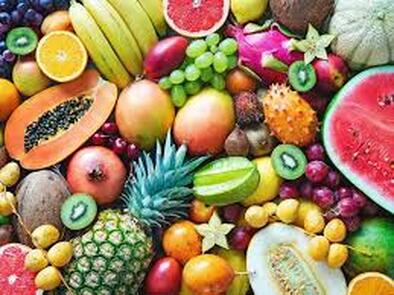 Micronutrients Protect Our Body Against Health Issues Micronutrients Protect Our Body Against Health Issues Another study focused on the antioxidants present in fruits and vegetables that decrease the risk of GC in individuals. The protective effect of produce has been mainly due to the presence of antioxidant effect of the vitamin contents such as tocopherols and vitamin C. But the number of studies analyzing this effect (antioxidants and risk of gastric cardia cancer (GCC) and gastric noncardia cancer (GNCC)) is extremely limited. One such study focused on the intake of fruits and vegetables and the effect of antioxidants on the risk of GCC and GNCC. Increased intake of fruits did not alter risk of GCC but did decrease the risk of GNCC. Intake of vitamin C was not associated with a risk of GCC but moderate to high intake of vitamin C was linked to a 40% reduced risk of GNCC. Retinol intake was linked to a dose-dependent protective association with GCC but did not prove anything for GNCC. γ-Tocopherol was associated with an elevated risk of GCC (2-fold increased risk) but a decreased risk of GNCC. So, increased intake of retinol proved to be protective against GCC whereas increased intake of fruits, vitamin C, tocopherols and lycopene was protective against GNCC. References Fruit & Vegetable Consumption & the Risk of Gastric Adenocarcinoma: https://onlinelibrary.wiley.com/doi/full/10.1002/ijc.27565 Fruits & Vegetables Consumption & Risk of Distal Gastric Cancer in the Shanghai’s Women’s & Men’s Health Studies: https://academic.oup.com/aje/article/172/4/397/85175 Consumption of Fruits but Not Vegetables Reduce the Risk of Gastric Cancer: https://www.ejcancer.com/article/S0959-8049(14)00150-6/fulltext Fruits, Vegetables & Antioxidants & Risk of Gastric Cancer among Male Smokers: http://cebp.aacrjournals.org/content/14/9/2087 Gastric Cancer Treatment: https://www.cancer.gov/types/stomach/patient/stomach-treatment-pdq Folate has been quite popular among pregnant women as these nutritional supplements are what goes into the prescription as soon as the woman is shared with the good news by her gynecologist or even before pregnancy when she plans to start a family. That’s mainly because neural tube defects (NTDs), a disorder stemming out as a result of folate deficiency, is the second most cause of serious birth defect affecting around 0.2-10 per 1000 pregnancies worldwide. While recommendations to nourish the body with supplements even before pregnancy sounds overcautious its mainly because defects of the brain and spine happen in the first few weeks of pregnancy even before the woman starts realizing that she is pregnant. It might be too late when she realizes that she is pregnant and starts on supplements. So, better be cautious than careless. The folate-NTD link is quite new and it was not until 1960s that its predominance came into limelight. Besides pregnancy, it is recommended that every woman gets around 400 mcg of folic acid every day apart from consuming it from a variety of foods rich in this nutrient as our bodies use folic acid to make new cells like skin, hair and nails.
Folate: Pregnancy at its Best Folate is a water-soluble B vitamin that’s naturally available in some foods, fortified in others and also extensively available as dietary supplements. An insufficient intake of folates owing to poor dietary intake, presence of conditions such as celiac disease or likewise can cause greater troubles to the individual in the form of NTDs, cancer and occlusive vascular disease. This is the case that’s possible in any woman and, obese/overweight women in childbearing age are at an even greater risk of giving birth to children with defects and are at a higher risk of NTDs. Folate Intake Impairs Growing Weight Issues Generally, obese/overweight women eat less of folate-rich produce and foods and we have evidences showing an inverse relationship between folate intake and BMI range and increased plasma homocysteine levels in these women. Researchers started a study to analyze the effect of increased folate intake through a diet that also enabled weight loss on a group of obese/overweight women. A group of 67 young women aged between 20 and 35 years were involved in the study after a thorough assessment of their eligibility criteria that included BMI ranges between 24-35, absence of conditions such as diabetes, BP, hyperthyroidism, metabolic disease, glucose intolerance, etc., did not lose more than 4.5 kg weight in the past two months and did not gain more than 3 kg weight between the assessment interview and start of study, did not miss out period cycles, not pregnant or breastfeeding and did not consume more than two alcoholic drinks per day. Each of the participant was randomly assigned to two types (diet C or V) of diets both of which provided them with 20% less than their theoretical energy requirements and increased intake of cereals and fruits-two foods that many of us lack in our daily diets for a period of 6 weeks. Diet C was based heavily on cereal intake which included cereal bars too that could be taken thrice a day based on the idea that these foods are rich in carbohydrates, fiber, minerals and vitamins, especially folic acid. Diet V was based on increasing intake of vegetables. Both the diets were based on the fact that they contained abundant folic acid. Every participant was asked questions pertaining to their activity levels, sleep durations and eating habits, and measurements of their height and weight were recorded before and after the study. Folate consumption levels were recorded in the form of dietary folate equivalents (DFE) which measures the presence of straight folic acid compared to food folate. The weight loss achieved were noted and the women were grouped further based on their weight loss results (greater or lesser than 2.5 kg). Results showed that:
Studies show that women with a BMI greater than 30 require an additional 350 mcg daily compared to others. This study is a clear indicator that weight loss has the ability to elevate serum folate levels. Cohort Studies A UK study found that lower folate concentrations was associated with higher BMI irrespective of diet, age, supplements and BMI. We have studies showing that maternity obesity puts a woman at a two-time increased risk of NTD and that pre-pregnancy obesity and low-quality diet were factors associated with an increased risk of severe birth defects. A long-term analysis was conducted on 8 different studies that were selected based on several criteria conducted on women of childbearing age with obesity. Research conducted on 12 women affected by obesity versus 12 women of normal weight using a single-dose folic acid supplementation. While median plasma folate levels did not differ in these women prior to the supplementation, after consuming the supplement it was found that folic acid does not distribute freely into adipose tissues and individuals with obesity not only weight more and have fat but also have more lean mass. A study by Baltaci et al showed that there was no difference in mean folate concentrations between women with or without obesity. The study by Tinker et al showed that BMI was inversely associated with plasma folate among women who did not use supplements containing folate acid. The fact that these levels were significantly lower in women with obesity compared to women with BMI in normal/overweight ranges clearly proves it. Also, the mean distribution of erythrocyte folate was higher in women with obesity comparatively suggesting that BMI affects the body distribution of folate. While nutrient intake during pregnancy was important quite some time back, nutrient needs before pregnancy and after childbirth have become extremely important nowadays. Folate levels in obese women may be altered and can also be a contributing factor in the increased risk of NTD. There are not many studies that analyze the folate status in childbearing-age obese/overweight women. Even these studies that do analyze show differences in their results-some of them do show decreased levels of plasma folate in a high percentage of women with increased weight whereas some don’t show any differences in folate levels between the two groups-overweight/obese or normal weight. Lifestyle factors too play an integral role in affecting folate levels in individuals. Excessive intake of empty-calorie, energy-laden foods, smoking, alcohol consumption and increased caffeine intake too can affect folate levels in the body. Eat more of veggies, especially dark green veggies, asparagus and Brussels sprouts, fruits, nuts, beans, peas, eggs, lean meats, grains and seafood for increased folate content. Still, evidences are conflicting supporting that folate status in women with obesity/overweight may be altered and may be a possible contributing factor in risk of NTD. Still, starting the woman on supplements before pregnancy is mandatory for the well-being of the mother and child as women with obesity/overweight are at a maximum risk of folate deficiency. References Folate Status in Young Overweight & Obese Women: Changes Associated with Weight Reduction & Increased Folate Intake: https://www.jstage.jst.go.jp/article/jnsv/55/2/55_2_149/_pdf/-char/en Folate Status in Women of Childbearing Age with Obesity: A Review: https://www.ncbi.nlm.nih.gov/pmc/articles/PMC6232191/ Folic Acid for the Prevention of Neural Tube Defects: https://pediatrics.aappublications.org/content/104/2/325 A picture-perfect family is a great sight to behold, a posture-perfect body is great to hold onto! How we sit, stand, walk and move around plays a definite role in determining the well-being of our body. Our lifestyle practices or our way of life in fact is not great these days and almost 70% of us experience some form of pain, predominantly shoulder and neck pain, throughout our life. This has made musculoskeletal diseases (MSD), a form of injury that affects the connective tissues such as muscles, nerves, joints and spinal discs dominant people’s life. Our lives revolve around computers and technology that dominate every sector right from banking and hospitals to education and hospitality. Sitting in front of a desktop/laptop affects our neck and shoulder muscles causing musculoskeletal discomfort and mood swings too. The ‘Posture Performance Garment’ invented serves to minimize this strain and improve the quality of life of these individuals. Ergonomics is the science of designing a workplace keeping in mind the needs of the worker. Ergonomic stressors include the force needed to complete a task, any awkward or static working posture followed while finishing the task and the repetitiveness of the task. Any or all these cause high degrees of discomfort in a person. Ergonomics has the capability to remove risk factors that can cause MSDs thereby raising the standards of human productivity. Long hours of desktop/laptop use put abundant strain on the wrist and arms putting the employee at an increased risk of repetitive strain injury such as carpel tunnel syndrome and tendinitis. Likewise, computer workers often slouch over their computers, keep their arms elevated and their wrist/fingers in a particular position to enable working on the laptop/desktop. In such cases the back muscle is overactivated and the wrist/arms too are pressurized. Though ergonomics program and stretch exercises have been tried upon these employees none have been successful in motivating them to comply and participate in such activities. The invention patented here comes of immense use in this regard as it provides a garment that’s been designed to improve the individual’s posture on wearing it. There have been conventional garments in the market but none of them have adjustable straps as given here in this invention. The absence of adjustable straps can even worsen the posture in the long run and necessitates the need to take off and put on the garment which might even prevent the user from using it altogether. But the garment invented here corrects all these, enables the user to adjust the amount of pulling force to help the wearer correct his/her posture and go back to his/her normal posture when desired. It corrects the wearer’s posture and helps him/her follow the posture in the long run even without the need for the garment thereon. The garment constructed might be a shirt, vest, tank top and many more which gives the user the flexibility to choose his/her comfortable choice of clothing to correct posture. The patent was first published on Feb 11th, 2016. For a detailed description of the garment and its role you can visit any of the below given patent sites: United States Patent & Trademark Office: http://patft.uspto.gov/netacgi/nph-Parser?Sect1=PTO2&Sect2=HITOFF&p=1&u=%2Fnetahtml%2FPTO%2Fsearch-bool.html&r=29&f=G&l=50&co1=AND&d=PTXT&s1=fitness&s2=health&OS=fitness+AND+health&RS=fitness+AND+health European Patent Office: https://worldwide.espacenet.com/publicationDetails/originalDocument?FT=D&date=20160211&DB=&locale=en_EP&CC=CA&NR=2956738A1&KC=A1&ND=4 World Intellectual Property Organization: https://patentscope.wipo.int/search/en/detail.jsf?docId=US201368424&recNum=1&office=&queryString=FP%3A%28posture+performance+garment%29&prevFilter=&sortOption=Pub+Date+Desc&maxRec=8 Difficult it is to lose weight but even more difficult it is to keep off the lost weight. Staying thin seems heavenly but not all of us are indeed blessed with a naturally slim body. Exercise and an active lifestyle are recommended for all people-those on a healthy body weight, overweight/obese individuals and of course, underweight people too. But individuals staying on a healthy body weight needn’t bother about the complexities of weight loss, post weight loss lifestyle changes and weight loss maintenance strategies. The world is exposed to obesity which has become a universal epidemic. Treating obesity is challenging but the main challenge does not involve losing weight but in successful long-term weight loss maintenance. Diets, do’s and don’ts, lifestyle modifications, articles, publishing, ads that promise instant weight loss, machines that try to act magical on human fat and pills for weight loss-all of these exist for what? ONLY FOR WEIGHT LOSS. What about maintaining the lost weight? It’s not treated as important as weight loss because people strongly believe that the scope of long-term weight loss maintenance is out of question. But, in order to determine if we are successful in keeping off the weight in the long term, firstly we need a strong definition that promptly defines it. Long-term weight loss maintenance is intentionally losing at least 10% of the initial body weight and keeping it off for at least 1 year. While this definition makes us feel positive and even data exists that at least 20% of obese/overweight patients are able to achieve it, current obesity treatment programs are not quite effective over the period which again leads us back to our belief that people who lose weight will regain all the lost weight within 5 years. So, how do our evidences measure up to these notions? Long-term Weight-Loss Maintenance: A Comparison Extremely obese individuals generally follow a very-low energy diet (VLED) to lose around 20-25 kilograms. But it has been proved that weight loss through VLED is no better than that achieved by other means in terms of long-term maintenance. Discussed below is a meta-analyses of different US reports of weight loss maintenance from 2 to 5 years after successful weight-loss programs that were completed using either a VLED or a hypoenergetic balanced diet (HBDs). Results of combined data of 29 studies most of which included both men and women aged between 30 and 60 years and whose treatment period was between 8 and 30 weeks showed that individuals maintained 67% of their initial weight loss at 1year, 44% at 2year, 32% at 3year, 28% at 4year and 21% at 5year. 13 studies used VLED and 14 studies used HBDs. Weight measures: Initial body weight of women: Between 74 and 121 kg Initial body weight of men: Between 100 and 148 kg Average initial weight loss in women: 3-38 kilograms Average initial weight loss in men: 6-44 kilograms The final results are tabulated below:
Though men weighed more than women, percentage of weight loss, period of weight regain and weight loss maintenance values did not differ greatly between the two sexes. Four VLED-studies that included 578 participants provided follow-up data for 4-5 years and eight HBD studies that included 448 participants provided follow-up data for 4-5 years. Weight loss maintenance, percentage of weight loss maintenance and reduced weight were all lower in the case of HBDs compared to VLED. All the 4 VLED studies reported weight loss ≥20 kg `while HBDs reported weight loss ‹10 kg. Six studies that compared weight loss maintenance numbers of those who performed vigorous exercise to others showed that people who did higher amounts of exercise were even more successful in keeping off the lost weight.
Final results of the analyses showed that obese individuals managed to maintain weight loss close to 3 kg after 5 years which is close to 23% of their initial weight loss. Random Weight Loss Studies A random analysis of 500 adults of which 228 of them were overweight/obese showed that 47 met the criteria for successful weight loss maintenance of having lost at least 10% of their initial body weight and maintaining it for up to a year. In many standard weight loss programs patients were successful in achieving weight loss of 7-10% (7-10 kg) of their body weight at the end of the 6-month treatment program and also maintained the weight loss of 5-6 kg at 1-year follow-up. Some studies followed these participants for 5 years or so and found that 13-20% participants managed to maintain weight loss of 5 kg or more at 5years. All these bring us the good news that close to 20% of overweight/obese individuals are successful in losing weight and maintaining it. There are some who are extremely successful too in maintaining their weight loss. A registry was set up in 1994 to track a list of those who successfully lost weight and managed to keep it off. This registry consisted of 4000 members aged 18 years and above who lost 13 kg of weight and managed to keep it off for a year. Participants reported a 33-kilogram weight loss and successfully managed to maintain a 13-kg weight loss for an average of 5-7 years. At least 13% of them maintained this minimum weight loss for more than 10 years. This shows the high success rate of some individuals who indeed are victorious in keeping off lost weight. While three behaviors: eating a low-calorie and low-fat diet, doing high levels of physical activity and weighing frequently were common there was an additional behavior identified-eating breakfast (consisting of cereal and fruit) daily that played a critical role in helping these individuals. So, reducing portion sizes alone is not the key but also to eat the right quantity of diet at the right time. Is equally important. Its seen that individuals who are successful in preventing weight regain for at least 2 years after weight loss are at a 50% reduced risk of regain. Critical factors that impact and promote weight regain include depression, loss of eating control, inability to maintain diet routines and lack of regular physical activity. The registry results show six ways in which individuals can maintain long-term weight loss:
Long-term Weight Loss Maintenance: A Meta-analysis: https://academic.oup.com/ajcn/article/74/5/579/4737391 Long-term weight loss maintenance: https://academic.oup.com/ajcn/article/82/1/222S/4863393 Successful weight loss maintenance: https://www.ncbi.nlm.nih.gov/pubmed/11375440 We survive on grains such as rice, wheat, rye and barley that provide us with our cereals, breads, pasta and baked goods. Allergies are not uncommon in this world but allergy to some of the commonest grains such as wheat, barley and rye though not common causes a significant effect on a section of the population allergic to it. Love for sandwiches, biscuits, ready-to-eat soups and pasta is found universally among people and when someone exhibits allergic reactions after consuming these foods there is a sense of foreboding and doom prevalent within the individual.
Wheat-based products commonly cause allergies in many people and there is a strong hint that these individuals might suffer from celiac disease. Celiac disease is a serious autoimmune disease that occurs in genetically predisposed people where the ingestion of gluten leads to damage in the small intestine. Every 1 in 100th person living in this world is affected by it. Gluten is nothing but a protein found in wheat, rye and barley. Individuals affected by celiac disease must avoid foods containing wheat, rye and barley. Even consumption of morsels of these foods can lead to abdominal discomfort, bloating and flatus, symptoms of irritable bowel syndrome (IBS). IBS is generally managed with a low-FODMAPS diet. Wheat flour contains increased quantities of FODMAPS which digs the path for yet another health condition known as wheat intolerance or non-celiac gluten sensitivity (NCGS). With this knowledge, let’s look into a significant patent that’s been designed to improve the quality of life of people with wheat intolerance. Significance of the Patent Statistics show that almost 14% of Western consumers whose staples include bread and other wheat-based foods develop wheat intolerance. A group of researchers have come up with ways that make food products containing wheat gluten protein tolerable for the generally wheat-intolerant person by including ingredients that medically meet the requirements of low FODMAPS content. The patent deals with the ideas of creating a low FODMAPS wheat gluten protein-based flour (WGPF) that can be used by wheat-intolerant individuals without succumbing into developing symptoms of wheat intolerance. This doesn’t conform to wheat flour alone but also extends to non-wheat sources such as barley, soy, pea, corn, lentils, tapioca and any other source that can provide low-FODMAPS contents that goes well with wheat-intolerant individuals. Though gluten-free foods and wheat-free items are available many of our favorite baked goods and even our breads contain gluten that cause heavy damage to the health of the person consuming it. With the help of the low-FODMAPS WGPF (wheat gluten protein-based flour) products the inventors achieved a great milestone in preparing wheat breads, croissants, muffins, doughnuts, scones, tortillas, biscuits, pastry, white noodles, pasta and breakfast cereal that can be consumed by those with NCGS. The invention comes as a blessing to those with NCGS providing them with a varied variety of foods that please their taste buds and comforting their satiety needs. The patent was published on 13th August 2015. For more details and briefs on the patent please click any of the links given below: European Patent Office: https://worldwide.espacenet.com/publicationDetails/originalDocument?FT=D&date=20160714&DB=&locale=en_EP&CC=AU&NR=2014381312A1&KC=A1&ND=4 World Intellectual Property Organization: https://patentscope.wipo.int/search/en/detail.jsf?docId=AU181666857&tab=PCTDESCRIPTION&office=&prevFilter=&sortOption=Pub+Date+Desc&queryString=FP%3A%28wheat-based+products+wheat+intolerance+FODMAPS%29&recNum=3&maxRec=5 United States Patent & Trademark Office: http://patft.uspto.gov/netacgi/nph-Parser?Sect1=PTO2&Sect2=HITOFF&u=%2Fnetahtml%2FPTO%2Fsearch-adv.htm&r=55&f=G&l=50&d=PTXT&s1=weight&s2=nutrition&co1=AND&p=2&OS=weight+AND+nutrition&RS=weight+AND+nutrition 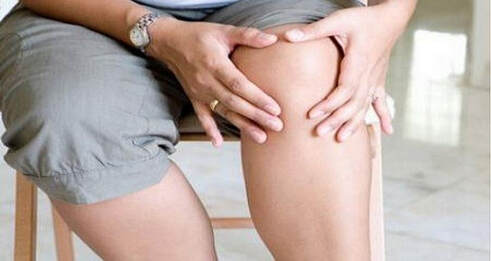 Think Beyond Symptom Management Think Beyond Symptom Management Age doesn’t seem to be a bar these days for health conditions and problems to hit a person. Advancements in science and technology may have improved our longevity but the quality of our lives are getting worse day by day-heart attacks hit individuals in mid-30s, diabetes loves young children, blood pressure has taken center seat in young adults and knee problems have ruined the quality of life of millions of people. Osteoarthritis Osteoarthritis (OA) is the most common chronic condition of the joints establishing itself as a rapidly growing cause of disability in the world. Though both the sexes are at a risk, the number of cases of osteoarthritis in women is almost double that of the male sex. It can affect anyone of any age group but its mostly people above the age of 65 who face the wraths of it. It’s been projected that more than 130 million people will suffer from OA by 2050. The knee is primarily the largest joint that’s affected by the disease whose major risk factors include obesity, age, joint injury, joint overuse, weak thigh muscles and genes. Statistics show that at least one in every 12 individuals above the age of 60 have hand OA & one in every second person will develop OA during his/her life. Obesity is a modifiable risk factor for OA and research even tells that obesity, diabetes and metabolic syndrome (MetS) directly influence the development of the condition. Haven’t we also heard our physician instantly recommending us to lose weight when we complain about knee pain? Weight plays a definite role in knee pain as our entire body weight is imposed on the knee for support and this causes rapid wear and tear of the body part. Presently, there are no varied treatment options available for OA and pain is confined mostly with symptom management or in worse cases, using total joint replacement when the joint is damaged beyond repair. Reputed arthritis societies and organizations recommend practicing regular physical activity and healthy diet to lose weight in obese/overweight patients as a combat measure against OA but what are the provisions set up in clinical settings for such treatments? Treating OA in Obese Patients through Diet & Exercise in Clinical Settings Obesity can both cause and worsen OA but the good thing is that it can be modified and controlled. We do have research material showing that weight reduction is a great strategic treatment option for OA. Understanding the condition and realizing that exercise intervention can help to reduce pain thereby enabling better mobility is also clearly proved through various studies. A study brought in 181 patients whose BMI was above 30 and suffered from severe knee osteoarthritis. Only 112 candidates (others quit due to health reasons and inability to attend sessions regularly) completed the program and their average age was around 57 years. The program was for a duration of 4 months during which 2 exercises and one dietary intervention sessions were organized every week. Each of the patient’s weight was measured and they were categorized based on their weight, age and initial OKS score. Oxford knee score (OKS), 30 second sit to stand (30s s-s), 6 minute walk test (6MWT) and EQ5Dquality of life were assessed during the study period. Patients with weight ranges between 100 and 110 and OKS score between 10 and 20 benefitted the most out of the program but it was seen that all the 112 participants who successfully completed the study displayed significant improvements in their physical abilities. This clearly shows that when the condition is tackled in obese people with diet and exercise interventions by professionals there are great opportunities for better treatment. Various studies have established the strong connection between obesity and knee arthritis. They show that people with a BMI greater than 30 are at a 5-time risk of knee OA. In adults above the age of 60, mean knee strength in obese males is 65% of body weight compared to 77% for controls while it is 50% of body weight for obese females compared to 62% for non-obese females. Muscle weakness is predominant among older adults and is a common reason for fall. Death due to such falls are also high in number. Various studies linking diet interventions in obese patients with knee OA have come to successful conclusions: A pilot study achieved 9% weight loss over 6 months in obese older adults with knee OA with the help of a partial meal-replacement plan and behavioral strategies; another study used an intensive low-energy diet to achieve 11% weight loss in 8 weeks. When obese patients lose weight there is an active reduction in the disability level and losing around 10% of the body weight results in greater potential advantages. Findings of various trials and meta-analyses of weight reduction strategies in obese/overweight individual are tabulated below:
A reduction in body weight affects OA by reducing the load on the knee. By combining calorie restrictions with calorie distribution (45-60% from carbs, 15-20% from proteins and <30% from fats) we attain greater benefits. Studies show that pain, physical function and walking distance improve by 26%, 31% and 15% with aerobic walking exercise. Patients feel that it is their doctor’s responsibility to guide them towards weight loss if needed. A recent study shows that only 42% obese individuals who visited their GP over a 1-year period were advised to lose weight. Only a very small percentage of physicians take the pain to write down a prescription for physical activity promotion programs (15%). But when their intervention is involved in obese patients with knee OA results are surely positive.
Diet & Exercise-Related Interventions Meta-analyses shows that a combination of strengthening, flexibility and aerobic exercise are likelier to improve function and reduce pain. Many studies promote a majority of these dietary interventions for maximized benefits:
References Exercise professional led physical activity and diet in obese individuals with knee osteoarthritis: https://journals.lww.com/acsm-essr/Pages/viewallmostpopulararticles.aspx Diet & exercise for obese adults with knee osteoarthritis: https://www.ncbi.nlm.nih.gov/pmc/articles/PMC3444812/ Role of diet & nutrition in treating osteoarthritis: https://academic.oup.com/rheumatology/article/57/suppl_4/iv61/4975692 Update on the treatment of osteoarthritis in obese patients: https://www.tandfonline.com/doi/full/10.1517/14656566.2016.1165208 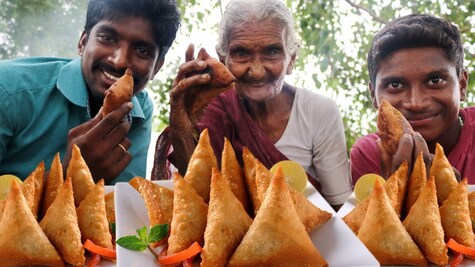 Our Love for Samosas Stay Forever! Our Love for Samosas Stay Forever! The aroma of mirchi bajjis, samosas and potato chips is nevertheless inviting to anyone who passes by the snack shop. What is snack time without these greasy and fried foods? Kids love their snack time just for the buttery biscuits, chocolatey cakes or fried foods. Adults too look forward to their daily evening ritual of vada pavs, French fries and more. While this is the scenario existing anywhere in the world, in India consumption of fried foods cooked in roadside shops, sold in supermarkets and prepared in restaurants is highly common. Though heart-wrecking, one cannot deny the fact that socioeconomic status of people determines their choice of foods. And, those belonging to the low-income category primarily rely upon fried foods sold in roadside shops for their meals and snacks. Even research shows that 48% individuals consume fried foods 1-6 times per week and snacks made up 21% of the meals consumed primarily constituting of different varieties of fried foods. So, oils constitute an integral part of cooking and with high inflation rates and hike in prices what is the possibility of cooking with oils just once and disposing them off? Almost none. Oils do add fat but what is the effect of eating foods that have been fried using those oils that have been repeatedly used for frying foods not once or twice but a many more times? Cancers are taking a toll on the lives of people and colorectal cancer (CRC) occupies third position as the commonly diagnosed and leading cause of death in individuals. We blame sedentary lifestyle, obesity and increased intake of fatty foods but a certain group of chemicals called the polycyclic aromatic hydrocarbons (PAHs) have been found to be great contributors to dietary contamination, human consumption and development of gastrointestinal tract (CIT) cancers. PAHs are formed while cooking at high temperatures. Diet is to be blamed for more than 80% CRC cases. Effects of Repeated Heating of Cooking Oils There have been no effective studies noting the effects of using repeatedly heating cooking oils (RHCO) in India though there is research data available on animals showing that consuming RHCO-based foods increases the presence of reactive oxygen species (ROS) and thus a decreased radical scavenging activity and oxidative stress. Studies show that use of RHCO induces genotoxicity and carcinogenicity, elevates blood pressure levels, increases cardiovascular disease risk, endothelial dysfunction, impaired vasorelaxation responses, increased LDL levels and atherosclerosis. While some studies in rats exhibit functional changes in blood vessels, serum alkaline phosphatase, aspartate aminotransferase and alanine aminotransferase levels; improper kidney functioning with high blood pressure levels, intestinal damage and malabsorption of glucose there are certain other studies that show no significant damages due to consumption of RHCO-based food in animals. This might be the scenario on one side but what about the knowledge of those involved in food preparation regarding the ill effects of RHCO? A Kuala Lumpur study tried to determine this in roadside vendors where 100 participants (food outlet operators) were involved in the study. These people were taken through a face-to-face questioning session and results showed that almost 67% agreed that RHCO was not good practice, 69% agreed that it was detrimental to health and 63% accepted that they use RHCO for preparing foods. An investigation was conducted in India based on the hypothesis that consumption of RHCO leads to intestinal tumor development owing to production of free radicals which generate damage at molecular level. A 28-day oral toxicity study was performed on both male and female rats and these animals were randomly assigned to treatment categories comprising of 1. Control rats (diet only) 2. Treated with unheated cooking oil (UHCO) 3. Rats treated with single heated cooking oil (SHCO) 4. Rats treated with repeated- heated cooking oil (RHCO). Body weights were recorded at the start and end of study and their jejunum, colon and liver were collected for testing purpose. There were no symptoms of mortality or actual death present in these rats at the end of 28 days but there was a drastic change in body weight and organ weight with decreased food consumption rate present in those rats that received 3 RHCO compared to other categories. Colon polyps (mostly adenomas) was present in rats treated with SCHO and 3RHCO. Also, antioxidant enzymes like SOD, GPx and MDA was seen to be higher and, GLU (glucose) and CHOL (cholesterol) levels were significantly higher than usual in 3RHCO-treated rats. This study showed that consumption of repeated heated oils produces altered hematological levels of blood cells. Eating foods prepared with RHCO poses debilitating health effects. The fat portion of the food and high temperatures of cooking are great risk factors for formation of mutagens and cancer in different parts of the body. Understanding the Frying Quality of Different Oils Oils and fats are composed of lipids and triglycerides which contain saturated and unsaturated fatty acids and glycerides. Vegetable oils constitute a part of our daily diet needed for energy levels, fatty acids and fat-soluble vitamins. Corn oil and mustard oil are regularly used for cooking while the latter proving to be heart-healthy due to its minimal amount of saturated fatty acids. Using the same oil repeatedly for frying purpose leads to oxidative and thermal reactions that alter the nutritional, physicochemical and sensory properties of the oil. These reactions occur based on the quality of oil used and frying conditions. A study tried analyzing the effect of temperature on the properties of oils after heating and frying. The viscosity, density and boiling point measurements of oil samples before and after frying were measured. Potatoes were cut into strips and deep fried in the oil at constant temperature at three frying times. Frying leads to thermo-oxidative or lipid oxidation and hydrolytic reactions that impair the quality of the frying oil. Major oxidation products called as hydroperoxides occur in triglycerides which again break down to produce lower molecular weight compounds such as fatty acids, alcohols and ketones resulting in a rancid product. Peroxide value (PV) is an important measure for understanding the rancidity reactions of oils. PV is indicative of the quality and stability of fats and oils. Results showed that both mustard and corn oil expressed low degree of unsaturation at room temperature and the presence of trans hydroperoxide forms of esters present with primary oxidized products. When the sample is treated at higher temperature up to their boiling points, a decrease in temperature indicates an increase in absorbance of peroxides. Both, fresh and used oil expressed similar FT-IR spectra. FT-IR spectroscopy helps in evaluating the degree of oxidation after heating and frying. This study showed that heating oils repeatedly decreased health effects of it. PV for corn oil increased during first frying gradually decreasing during the second and third frying and in case of mustard oil PV consistently decreased through the three frying. Fried Sunflower Oil & Bone Mass We are well aware that consumption of fried foods results in obesity, liver damage and atherosclerosis but their effect on bone mineral content and bone mechanical competence remain untouched territories. A new study has elaborated on the negative effects of sunflower oil-fried foods intake on bone mass and strength during growth in rats. Three different diets were fed to rats randomly-control diet, SFO (fresh oil) and SFOx (fried oil). The sunflower oil was heated for 6 hours a day, cooled down and the same oil was used continuously for seven days. Every twelve hours, 500 grams of potato was added to the frying oil. Food intake was noted down daily and the end of the 8-week study blood samples were injected. Total skeleton bone mass content (BMC) and bone mineral density (BMD) were assessed in vivo at the end of the study period. None of the animals expressed significant difference in body weight and length at the beginning of the study but body size varied greatly depending on the type of food consumed. SFOx-fed rats attained minimal body length comparatively. Rats fed on SFO diets containing fresh or fried oils showed no great differences in energy consumption compared to the control group. Serum lipid profile was highly altered in the rats belonging to the SFOx group. Rats fed with SFOx showed higher diminished total skeleton BMC, BMC related to body weight (BMC/W), tibiae BMC/W, femur BMC/W compared to other two rat groups. There was no great difference found among rats fed SFO and C diets in regard to BMC, BMC/W, tibiae BMC/W and femur BMC/W. Strangely, there was no differences in bone mass density (BMD), spine BMC/W, spine BMD, femur BMD and tibiae BMD of rats fed on any of the diets. Rise in serum cholesterol levels and total cholesterol levels in rats fed SFOx diet are risk factors for bone fractures. Also, low BMC is a serious risk factor for developing coronary artery disease. All these studies have proved without doubt that repeatedly using the same oil for frying purpose causes adverse effects on the health of the individual. Minimize your intake of fried foods, never reuse the same oil for cooking and if you wish to fry, do it with high-quality edible oils. References Delirious health effects of consumption of repeatedly heated vegetable oil: https://www.ncbi.nlm.nih.gov/pmc/articles/PMC5616019/ Evaluation of frying oil quality: https://www.sciencedirect.com/science/article/pii/S1878535214001014 Repeated sunflower oil frying affects bone quality in rats: https://www.foodandnutritionjournal.org/volume7number1/fried-sunflower-oil-intake-affects-bone-quality-in-growing-rats/  Even Birds Love to Nibble on Our Favorite Snack Sometimes! Even Birds Love to Nibble on Our Favorite Snack Sometimes! Don’t go nuts over nuts! The crunchy almonds, green pistachios that peep out of their creamy shells, brain-shaped walnuts, exotic hazelnuts, the friendly peanuts and the evergreen cashew nuts are a treat to our taste buds indeed but overeating them can prove to be harmful for your health. Nuts are fruits and we have been recommended to eat five portions of fruits and veggies daily as a part of our healthy meal plan. If you feel there is nothing wrong in substituting nuts for your juicy strawberries or watermelons you have been absolutely mistaken. A nut is a fruit that contains a non-edible part (shell) and an edible inner part (seed). Its not only humans but also animals and birds that love to nibble on these tasty treats for their high nutritive value and energy source. There are a plethora of research happening on these calorie-rich edibles for their benefit in lowering the risk of diseases such as cardiovascular disease and cancer. Nuts are the best bets to buy during any season, the best snack that could be munched in between your meals and fulfills health requirements for every penny spent as they are rich in bioactive nutrients such as healthy fats, fiber, vitamins, minerals, phytosterols, folate, magnesium, phosphorus, amino acids and selenium. Epidemiological studies have supported the fact that consuming nuts reduces the risk of cardiovascular disease, type 2 diabetes mellitus and cancer. But what role do they play in affecting metabolic features and body weight management? Going Gaga Over Nuts Metabolic syndrome (MetS) is a cluster of metabolic disorders that include abdominal obesity, high blood sugar levels, blood pressure levels, cholesterol levels and triglyceride levels. MetS is turning out to be an epidemic that’s spreading like wildfire affecting more than a quarter of the world’s population placing them at a higher risk of cardiovascular diseases, stroke and diabetes. Still, this is a disease that can be easily controlled by reducing your weight and eating a proper diet. Likewise, obesity/overweight also exists as a global epidemic with more than 1.9 billion people aged above 18 years branded as overweight and 650 million of them listed as obese (acc to WHO 2016 statistics). On a positive note, people are beginning to realize the importance of a healthy lifestyle and have started making healthy diet modifications. All these play an integral role in reducing the risk of MetS and overweight/obesity. Including more of fruits, vegetables, whole grains, proteins, dairy and nuts and seeds is essential for good health. But how much of these nuts and seeds to include and does it rather backfire as a risk factor for obesity is the primary question here. There are studies quoting various results with some of them showing that nut consumption was inversely associated with risk of MetS or overweight/obesity, some showed no links and others showed inconsistent results. A thorough analysis pooled data from different relevant studies and came to a conclusion that is rather indicative of a nut’s role in our life! Nut Consumption: Effect on MetS Risk & Obesity/Overweight Risk: A Conglomeration of Studies The analysis including various studies that had dealt with nut consumption and its effect on metabolic syndrome and overweight/obesity risk came up with 7840 reports of which 3629 were duplicates and 4011 irrelevant studies were removed. 132 studies did not meet the study criteria and finally it was only 68 studies that was included in the analysis. These studies together consisted of 420,890 participants with 4625 MetS cases and 47,235 overweight/obesity cases. All of these studies fetched data on nut intake through food questionnaires. The clinical trials documented 7184 subjects who were followed up anywhere between 3 and 336 weeks.
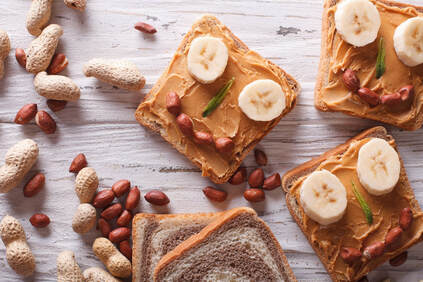 Peanut Butter is an All-time Favorite Peanut Butter is an All-time Favorite Nut Consumption & Obesity Risk in Women Nuts are good for the heart and peanuts are special-these are the first nuts to be called ‘heart-friendly’. These are also less expensive and widely consumed. Every nut has a unique nutrient composition that helps in fulfilling various health criteria. Studies exist linking the relationship between nut consumption and its effect on MetS and overweight risk. One study focused on the relationship between long-term consumption of nuts or peanut butter and weight change in young and middle-aged women. This study included 51,188 participants who were followed up using food questionnaires that were mailed twice a year since the year 1989. Participants were asked to comment on the portion size of different foods consumed during the previous years. There were 9 choices ranging from never to >= 6 times/day. 1991 and 1995 questionnaires included questions on consumption of peanut butter and tree nuts during the previous year. In the 1999 questionnaire, tree nuts were subdivided into walnuts and other nuts. Total nut consumption was the sum total of peanuts and other nuts consumption. To assess the relationship between nut consumption and body weight changes, women were divided into 4 categories depending on their frequency of consumption-never/almost never, 1-3 times/month, 1 time/week and ≥2 times/week. Percentage of women who fell into each of the groups was as follows: never/almost never: 58.8%, 1-3 times/month: 19.5%, 1 time/week: 14.8%, 2-4 times/week: 6%, 5-6 times/week: .5%, 1 time/day: 0.3%, 2-3 times/day: 0.09%, 4-5 times/day: 0.006% and ≥ times/day: 0%. Results showed that:
Another study in Spain showed that compared to those who never/rarely ate nuts, participants who ate nuts ≥2 times/week had a 31% lower risk of gaining ≥5 kg during follow up. Those who frequently ate nuts had an average 0.42 kg less weight gain compared to those who rarely ate nuts. There have also been trials that show that increased consumption of nuts does not cause weight gain but rather, incorporating nuts into hypocaloric diets might be beneficial for weight control. The EPIC-PANACEA study looked into the relationship between nut intake and changes in weight over a 5-year period. This study included 373, 293 individuals whose body weight was measured at the beginning and end of the study. The relative risk of becoming overweight was measured and results showed that on an average, participants gained 2.1 kg weight over the 5-year period. In comparison to those who did not eat nuts those who had the highest consumption had less weight gain over 5 years and also had 5% lower risk of becoming overweight. This study also proves that nut consumption is associated with reduced weight gain and lower risk of obesity. More than 75% of a nut contains fat and hence, it is recommended that you eat them in moderation. It is advisable to eat four servings of nut per week and even more important is the fact that these must be raw or dry-roasted without being covered in chocolate, sugar or salt. Despite these studies showing that nut consumption is not a risk factor for weight gain, there are plenty other factors that must be considered too to reap these benefits. Nuts, being calorie-laden, are not miracles against obesity issues or metabolic syndrome. Hence, enjoy your share of nuts but do mind the portions and follow regular exercise schedule to reap maximum benefits. References Nut consumption & risk of metabolic syndrome & obesity/overweight-https://nutritionandmetabolism.biomedcentral.com/articles/10.1186/s12986-018-0282-y Effect of long-term nut consumption in women: https://academic.oup.com/ajcn/article/89/6/1913/4596881 How do we fare after consuming nuts for a 5-year period? https://link.springer.com/article/10.1007/s00394-017-1513-0 Eating nuts for health: https://www.mayoclinic.org/diseases-conditions/heart-disease/in-depth/nuts/art-20046635  Late for Office! Sorry, No Time for Breakfast Late for Office! Sorry, No Time for Breakfast Blessed are those who get to eat three meals a day! The rise in food prices, stagnant income levels and increased expenses have created a situation wherein getting through the day with three nutritious and well-balanced meals has become a target to achieve for many. Contrarily, some of us take our breakfast, lunch and dinner for granted and worse, skip them altogether for many different reasons. Eating meals opens unto you the opportunity to take in adequate nutrients, bond with family, friends and colleagues and above all, replenish your energy stores for performing the day’s activities with renewed interest and stamina. Abstaining from eating a meal or two opens the door for overeating/binge eating during other meals which affects the health greatly in the long-term. Meal skipping is defined as the exclusion of one or more meals (breakfast, lunch or dinner) during the entire day either voluntarily or due to various other reasons. There are no second doubts that any of us tend to skip our meals sometime owing to unavoidable circumstances and this is quite acceptable. But failing to treat your mealtime importantly mostly is unacceptable, especially in young adults who are most popular for their higher rates of meal skipping compared to people belonging to other age groups. By young adults, I mean people belonging to the age group between 18 and 30 years who are in their prime years of life committing to studies, seeking higher rankings in employments, settling down in life committing to marriage or trying to accomplish their goals in life. To achieve any of these feats one needs abundant energy and motivation for which the food you eat remains at the top of the list. But our young generation (almost anywhere between 24 and 87%) simply lack the insight to fulfill this need. So, what do you think are the factors that prevent them from achieving the simple target of consuming three meals a day daily? Grassroot Differences in Meal Consumption Parents have always raised concerns over their offspring’s inappropriate eating patterns that includes low consumption of fruits and vegetables, high consumption of empty-calorie foods and their negligence towards eating all three meals of the day, especially breakfast. Breakfast, the most important meal, is the one that’s hugely neglected by most-kid, young adult or elderly alike. Skipping breakfast regularly is associated with inadequate nutrition levels, decreased energy levels, missing vitamins and minerals and increased risk of obesity, markers of insulin resistance and cardio metabolic risk factors. Though skipping meals, especially in young adults, is a common scenario existing worldwide there have not been many researches finding correlates of this unhealthy eating behavior. This stage of life holds a critical place in the development of long-term health behavior and eating habits and, the increased existence of poor eating practices in this group makes it highly necessary for us to understand the correlates associated for better dietary modifications and public health interventions. A large-scale review accumulated 331 articles that contained data on meal skipping in young adults of which 141 articles were eligible and 35 studies were included in the review. These 35 studies were conducted in 15 different countries that included Unites States, Japan, Turkey, Nigeria, Korea, Ghana, Poland, China, Croatia, Egypt, Greece, India, Iraq, Saudi Arabia and UAE. Of the 35 studies, 17 of them mostly consisted of female participants, 10 had female candidates only, 6 consisted mainly of male participants, 1 had equal number of males and females while 1 did not report sex ratio. Results showed:
Sex: Sex was mentioned as an important correlate in 12 studies. While a greater number of males were seen to skip breakfast, lunch and dinner was missed more by females. Age: Skipping breakfast was prominently linked with age. Majority of the studies reported that individuals between 15 and 20 years predominantly skipped breakfast compared to those in the age group of 20-30 years. Ethnicity: 5 studies reported ethnicity association with skipping breakfast. Caucasian participants quite often skipped breakfast compared to Japanese, Koreans or African Americans. Also, few studies reported that Japanese participants did not miss out on lunch and dinner compared to Caucasians or Koreans. Menstrual Cycle: More individuals with an irregular menstrual cycle were likelier to skip breakfast compared to those having a regular menstrual cycle. Physical activity: This was directly associated with eating breakfast in many of the studies. Individuals who exercised for more than 200 minutes every week ate breakfast almost 6-7 days a week compared to those who exercised only for 150 minutes a week. Fatigue: More commonly a person experienced fatigue, greater was the frequency of meal skipping. Also, those who slept late nights such as 1.30 AM or so skipped their meal and this could be any meal of the day. Psychological wellbeing: This is an important correlate. Generally, people who are overweight or wish to lose weight tend to skip meals in order to lose weight. Frequent meal skipping was found in those who express depressive symptoms and who have a self-perception of being overweight. It was seen minimally in those who were mindful and had increased body satisfaction. Time: This was the strongest correlate mentioned in 9 of the 10 studies. Many students complained lack of time as an excuse for missing breakfast or any other meal. This implies that their prioritizations vary and a healthy eating behavior is down their priority list which makes them ignore it most of the times. Hunger, Weight Control, Money, Taste, Religion & Habit: These were mentioned as some of the critical correlates by many of the participants in the study. Rural/urban: People in rural areas missed meals more frequently than those in urban areas. Body Mass Index (BMI), Education, internet use, housing type and physical environment influence provided mixed results. Another study focused on young adults in Australia where 986 participants were recruited of which 611 of them were females. 578 participants qualified for the study of which 296 of them did not skip any meal. Of the rest, there were 57 (10%) who skipped any meal of the day, 87 (15%) who skipped breakfast, 72 (12%) who skipped lunch and 58 (10%) who skipped dinner. Most of them were around 23-25 years old, females, having a university degree, did not smoke and exercised regularly. Results showed that those who had a university degree had lower odds of meal skipping comparatively, lack of time was quoted as the predominant reason for skipping breakfast or lunch and also, those who were previous or current smokers skipped breakfast 10% more than the result of the study group. Quoting lack of time as a correlate has been a common factor that has been quoted in multiple studies across the world. This makes us wonder how much these individuals value the food they eat. Young age might give you the energy now but the impact of missing your meals is surely going to be a big blow on your quality of life later. Then, you would be at a point of no-return. 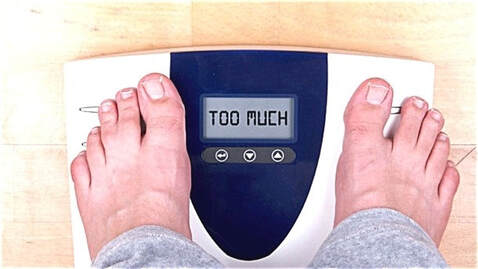 Skipping Meals to Lose Weight is Irrational Skipping Meals to Lose Weight is Irrational Another cross-sectional study showed that meal skipping was highest seen among overweight adolescents where breakfast was consumed by 53% nonoverweight youth, 48% moderately overweight youth and only 43% very overweight youth. Almost 19% of adults and 23% adolescents skipped meals to control weight increase. Most young adults reported meal skipping as a strategy for losing weight but they were the ones who consumed more of fats and sugars as well. It is required to accurately chart your meal plan to make it well-balanced and nutritious rather than skipping one meal and then overeating during the other. It is appreciable to be wise, eat regularly and stay healthy to have a good quality of life. Education, lack of time, weight consciousness and money might be strong indicators of missed out meals but in the end, you are a sum total of your actions. Failing to eat right and stay healthy will not only affect you but also the people around. References Correlates of skipping meals in young adults: https://www.ncbi.nlm.nih.gov/pmc/articles/PMC5133750/ Examining the correlates of skipping meals in young Australian adults: https://nutritionj.biomedcentral.com/articles/10.1186/s12937-019-0451-5 Risk factor for obesity: https://www.sciencedirect.com/topics/medicine-and-dentistry/meal-skipping  Inflated Prices of Produce Diminish Potential Buyers Inflated Prices of Produce Diminish Potential Buyers The sight of a poor man in front of a fruit shop is a rarity! I don’t deny that people belonging to lower economic ranges don’t eat veggies and fruits. They do consume, but the quantity and frequency don’t meet the required standards. A balanced diet is the right combination of fruits, vegetables, whole grains, dairy, lean meats and poultry in the appropriate quantities. Nutritionists and dietitians recommend that people fill half their plates with fruits and veggies with the other half being filled by the other food groups (proteins, dairy and whole grains). But sadly, people belonging to a lower socio-economic position (SEP) population prefer to eat foods that are lower in costs and greater in quantity. This makes us wonder whether social class does have an integral role in affecting diet quality. Nutrition & Diet The food that we eat plays a critical role in affecting the health of our body. We have got ample data that the difference in health quality of people is directly proportional to dietary factors. Diets rich in fruits, veggies and whole grains are high in nutrients such as vitamins and minerals and low in energy density, whereas diets rich in added sugars, refined grains and added fats are energy-dense but poor in nutrients. The difference in energy densities greatly predict obesity and metabolic syndrome rates. People belonging to the higher section of the society are observed to be fitter, healthy-weighted and habituated to eating nutritious foods compared to the lower SEP group who suffer greatly from increased risk of obesity, cardiovascular problems, type 2 diabetes, osteoporosis and certain forms of cancer. High energy foods rich in sugar and fats are available at a cheaper cost comparatively. These nourish the individual with empty calories making the person feel fuller for longer periods. Also, such foods are available cheaper and this makes people of lower socioeconomic status prefer them greatly. We don’t see a small kid living in a hut munching on some nuts or chewing away a carrot stick but only mostly witness him/her with a lollipop/cream bun in hand. An opportunity to exercise, purchase the required fitness gears, access relevant foods and knowledge about the same lack profusely in this section of the people. The quality of the food that we choose is not only dependent on the economic status but also on the occupation, education, age and sex of the individual. Understanding the barriers that exist in the society against adopting a healthy diet is crucial for minimizing the differences in diet quality. There are studies proving that nutritious foods cost more per calorie than energy dense foods that lack any nutrition. Variations in Diet According to Socio Economic Status There have been several studies that have taken up the relation between nutrient intake and socioeconomic status (SES), the impact SES creates on the types of foods individuals choose and the resulting differences in health of the individual. One such study focused on the different foods consumed by individuals belonging to high SES and low SES, and the results are tabulated below:
Higher SES groups consumed more of fruits and vegetables with great variety. Studies in European countries showed extreme difference in the consumption levels of produce between high SES groups and low SES groups, in Australia there was a 3-fold difference witnessed and in Netherlands women with lower education consumed fruits 3 times lesser than those who were more educated. US and UK showed great disparity in the consumption of fruits and vegetables while certain European countries have surprised us. Greece, Spain, Holland and Portugal showed that lower SES groups consumed more fruits and vegetables and domestically produced foods. The table also shows that lower SES groups consumed more fatty meats, fried/canned fish compared to higher SES groups who consumed more of lean meats, fish and seafoods.
Added sugars was again a problem in people belonging to the lower SES groups as they consumed more of cakes and sugar but even people belonging to higher SES groups ate more candies and pastries. In a nutshell, more of fruits, veggies, whole grains, lean meats and proteins were consumed by higher SES groups whereas fatty meats, added sugars, refined grains and fats were consumed by those in lower SES groups. Fiber & Nutrients: The study concluded that higher SES groups consumed more of fiber and micronutrients such as vitamins and minerals comparatively. Vitamin D, profoundly found in fatty fish was lacking commonly in lower SES groups and the dietary intakes of vitamin C, iron and folate were also insufficient in people belonging to the lower SES groups. Energy & Macronutrients: Proteins showed positive and negative associations for the SES groups, fats and carbohydrates showed no consistent SES gradient. Higher income and education were associated with a lower dietary energy density. Yet another study showed that substituting healthier foods increased expenses by 30-40% which is not affordable by many. Poor people cannot bear the risk associated with trying new foods and choose long-lasting ones that are likelier to contain more added sugars, fats and refined grains. HELIUS Study Four ethnic groups, Dutch, Surinamese, Turkish and Moroccan, were considered for the study and they were given ethnic-specific food frequency questionnaires (FFQs). The questionnaires included questions on the frequency and portion sizes of 200 different items consumed during previous months. The study observed that higher dietary costs were associated with higher dietary quality, the importance of dietary costs for dietary quality differed between socioeconomic and ethnic subgroups and also was able to derive the subgroups that were able to achieve maximized dietary quality at a low dietary cost. US studies showed that Mexican-Americans and Hispanics achieved higher dietary quality at lower costs; Moroccans, Turkish and South-Asian Surinamese origin individuals consumed nutritious diets compared to Dutch and African Surinamese origin people. Dutch individuals displayed lowest dietary quality despite higher education levels. Lower educated Moroccans expressed higher dietary quality. Though higher dietary costs were associated with higher dietary quality we also seem to witness the fact that lower dietary costs too sometimes lead to higher dietary quality. This makes us check out on the interaction between different resources, such as material resources, nutrition knowledge, accessibility and availability of food retailers, food costs, to dietary quality. For individuals belonging to lower income groups or lower education levels the price of quality foods can deter their goal of eating a healthy meal. The pricing of fruits, veggies and grains have peaked since the last couple of decades and this had burdened the common man greatly. Individuals think twice before buying milk, produce or even rice as to the quantity required and their shelf-life. The inclusion of various policies that target food pricing brining them to nominal levels affordable by the common man would be beneficial to individuals across different educational and ethnic backgrounds. Health initiatives to address nutritional disparities and bring in effective solutions is the need of the hour now. References Social Class predicts diet quality: https://academic.oup.com/ajcn/article/87/5/1107/4650128 Are Socioeconomic disparities in diet quality explained by diet cost? https://www.ncbi.nlm.nih.gov/pmc/articles/PMC3951975/ Ethnic differences in the relation between dietary cost and quality: https://nutritionj.biomedcentral.com/articles/10.1186/s12937-019-0445-3 Diabetes, heart problems and cancer take a toll of our lives each year unperturbed by the age of the person affected yet our concerns over infectious diseases take priority. This is not an exaggeration but the exact situation seen in several countries, especially developing countries. 1980s were a period where non-communicable diseases (NCDs) took a backseat but now NCDs are basking on the attention garnered owing to innumerable programs and awareness events conducted in many parts of Asia, especially India.
The National Institute of Health (NIH), USA in collaboration with the Fogarty International Center has granted aid and support for the intense research constituting non-communicable diseases (NCDs) in India. India has more than 70 million people affected by diabetes making it a country that bears one of the highest number of people living with diabetes-an NCD. Diabetes exists as a standalone risk factor and also promotes the risk of other NCDs such as cardiovascular disease. With the appropriate measures and effective approach in the form of diet, exercise and lifestyle change it is also possible to prevent NCDs. Fogarty-NIH-India Collaboration Fogarty helped establish a research training program in India to nurture researchers specializing in clinical, operational, health services and prevention science research based on NCDs. They have a tie up with the Madras Diabetes Research Foundation (MDRF), Chennai which is used as a platform to endorse research training that can help in the development of prevention programs to fight against diabetes. MDRF independently produces a number of research publications which includes a rich collection of data focusing on genetics as a risk factor for diabetes, helping people exercise by creating workout-friendly environments and so on. Its also amazing to know that many of the critical analysis, research materials and findings relating to diabetes research in our country have emerged from MDRF. Lack of Environmental Spaces Ups Diabetes Mellitus Cases The Chennai urban population study conducted a few years back showed that 12% of residents of a community in western Chennai, India were suffering either from diabetes or were at a prediabetes stage. Diabetes is a disease that can be curtailed in the initial stages or even prevented altogether with a disciplined life strategy that includes a healthy diet, regular exercise, minimal stress and an active lifestyle. Where we live plays a deciding role on what we do, how we live, our lifestyle and how we meet our needs to eat, exercise, sleep and relax. India is a beautiful country well-know for its rich diversity. Every state has its own beauties. For instance, Kerala is defined as ‘God’s own Country’, Bengaluru is the ‘Garden City’ and Jammu & Kashmir is known as ‘Paradise on Earth’. But we have reached a stage where every city in this country looks the same in terms of infrastructure. Each of them has become an urban jungle with their high-rise buildings, gated community apartments, flyovers and more. We can term it as build environment which denotes an environment modified by humans including roads, schools, offices, leisure, transportation, pollution and highways resulting in a sedentary lifestyle for every human being. Those living in the cities were at a greater risk of obesity and diabetes compared to those living elsewhere. The only exception to this is Kerala where rural prevalence rates have outnumbered urban prevalence rates. Being aware of these conditions, researchers at the Fogarty-supported MDRF insisted people living in that specific community in Chennai to increase their physical activity levels. Sadly, these citizens lacked even a simple place to walk, jog or run. In short, they did not have an appropriate place to exercise. To handle this emergency situation, individuals in the community pooled in money and built a park with a proper playground and a designated space for walking. A follow-up study showed decrease in diabetes rates in the following years. The MDRF also conducts awareness programs in the form of lectures, short videos and pamphlets and one such program was conducted in one of the areas in Chennai for 3 years consecutively. When a follow-up study happened after seven years it showed a 277% increase in the number of walkers and the percentage of people who exercised rose from 14% to 58%. Absence of parks, free spaces to walk and existence of various transportation options have nullified the chances of walking, doing exercise and staying active. The best way to curb diabetes is to understand the different features of the built environment and modify it to promote health. Still, there are environments in certain communities that pave way for walking, biking and exercise amongst rapid urbanization too. Now is not the time to repent for the mistakes that have already happened nor can we re-live early man days when the individuals hunted and searched for food and water-an exercise on its own. Neither can we do away with technical advancements and use of gadgets. All that we can do is build upon healthy habits, daily exercise practices and nutritious eating habits to minimize the effects of obesity. Maybe we can lay the plans for a future community that promotes physical and mental health with the assistance of health-friendly communities and features. References Urban sprawl: https://www.ncbi.nlm.nih.gov/pmc/articles/PMC2878692/ Diabetes in Asia: https://www.fic.nih.gov/News/Examples/Pages/india-diabetes.aspx Chennai citizens build parks to curb diabetes: https://www.fic.nih.gov/News/GlobalHealthMatters/Sept-Oct-2011/Pages/chronic-disease-diabetes-walking.aspx |
AVOID FRAUD. EAT SMART+91 7846 800 800
|
- Home
- Written Testimonials
- Consult
- Clinics
- Blogs
-
Diet & Nutrition
- Diabetes Reversal
- IVF IUI not needed for PCOS PCOD Infertility
-
Medical Nutrition
>
-
Disease & Conditions
>
- Infertility | PCOS
- Diabetes Mellitus
- Cholesterol
- Hypothyroid
- Kidney Problems
- Hypertension
- Cardiovascular Diseases
- Liver Diseases
- Gastro intestinal disorder
- Cancer
- Metabolic Disorders
- Orthopedic Disorders
- Eating Disorders
- Dietary Recall
- Weight Record Filled By Clients
- Online Payment Transaction Details
- Online Clients Weight Check Form
- Our Program Package Service Charges
- Weight Record 2017 Clients
- Measurements sent by Clients
- Terms & Conditions Of Payment
- Thanks. Your Form is Submitted
- Video Testimonials
- Lifestyle & Wellness
- Lifestyle & Wellness Blog
- Allergy & Intolerance
- Weight Loss / Gain
- Weight Loss / Slimming Blog
-
Disease & Conditions
>
- Life Cycle Nutrition >
- Sports Nutrition >
- Integrity in Nutrition
- Knowledge Centre
© COPYRIGHT 2022. ALL RIGHTS RESERVED. FRST HEALTHCARE PVT LTD.
Dr. Nafeesa Imteyaz of First Eat Right clinic, is the Best Dietitian Nutritionist in Bangalore. Best Dietitian Nutritionist in Pune. Best Dietitian Nutritionist in Hyderabad. Best Dietitian Nutritionist in Chennai. Best Dietitian Nutritionist in Mumbai. Best Dietitian Nutritionist in Delhi. Best Dietitian Nutritionist in Kolkata.



